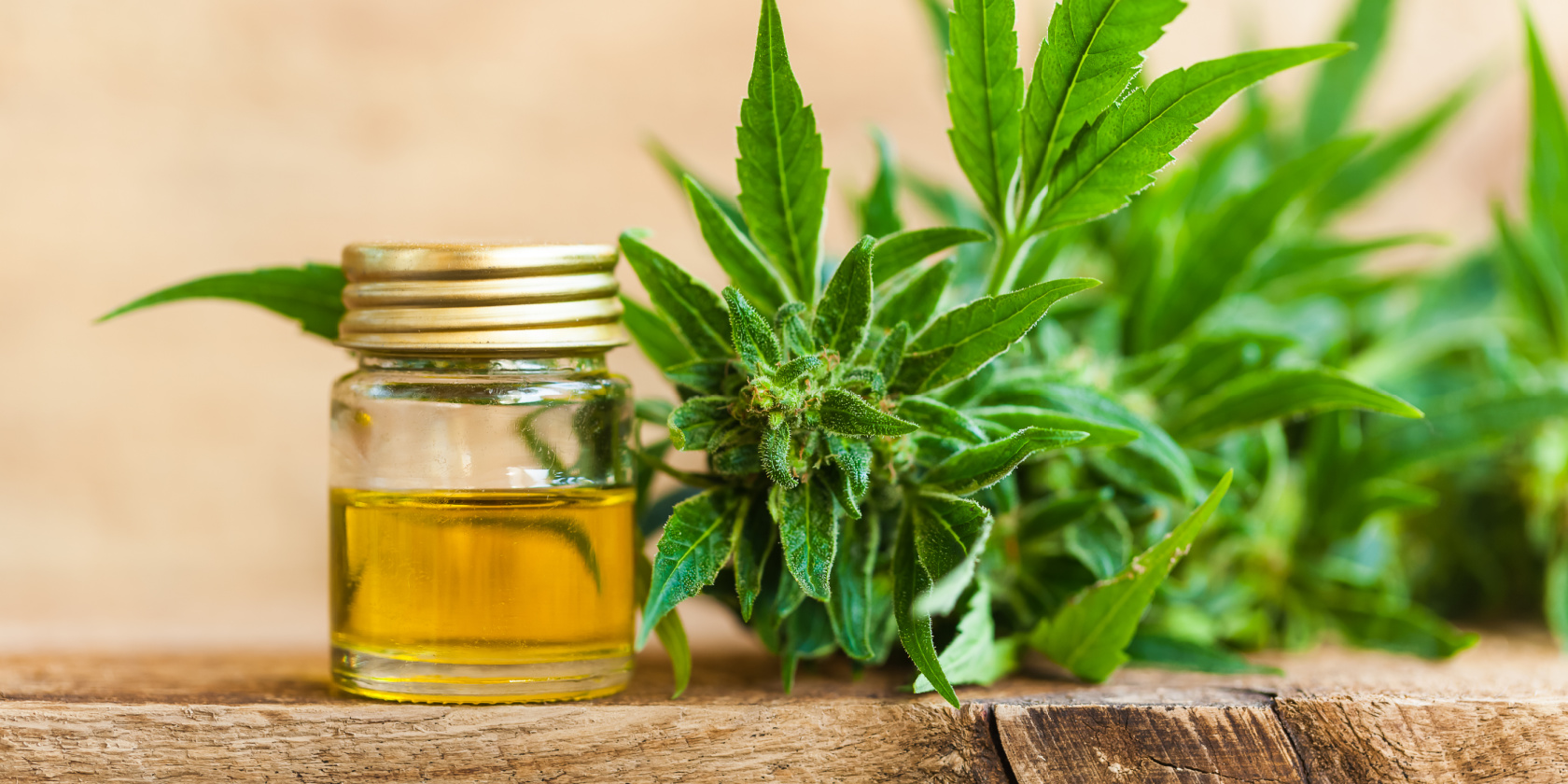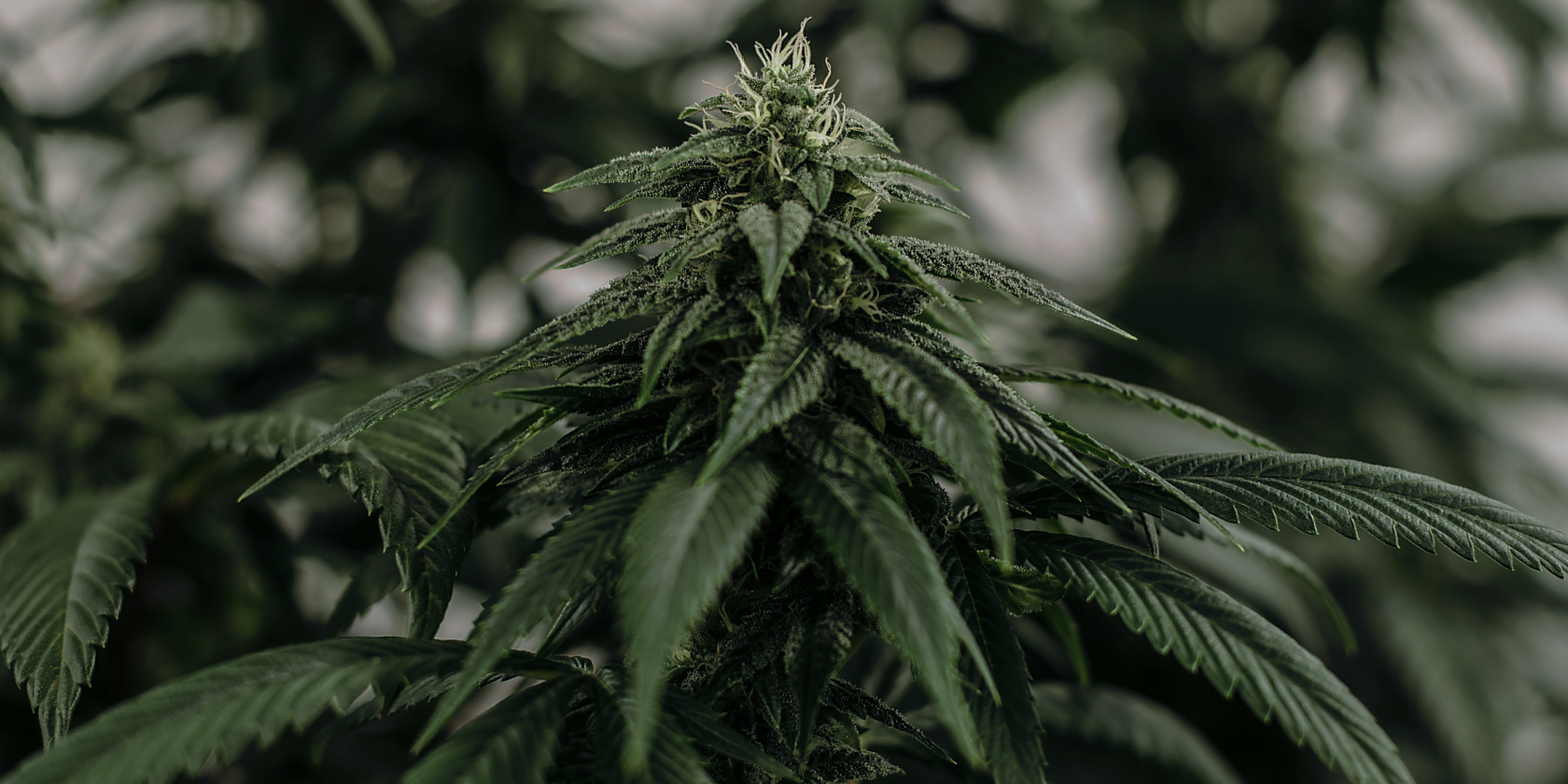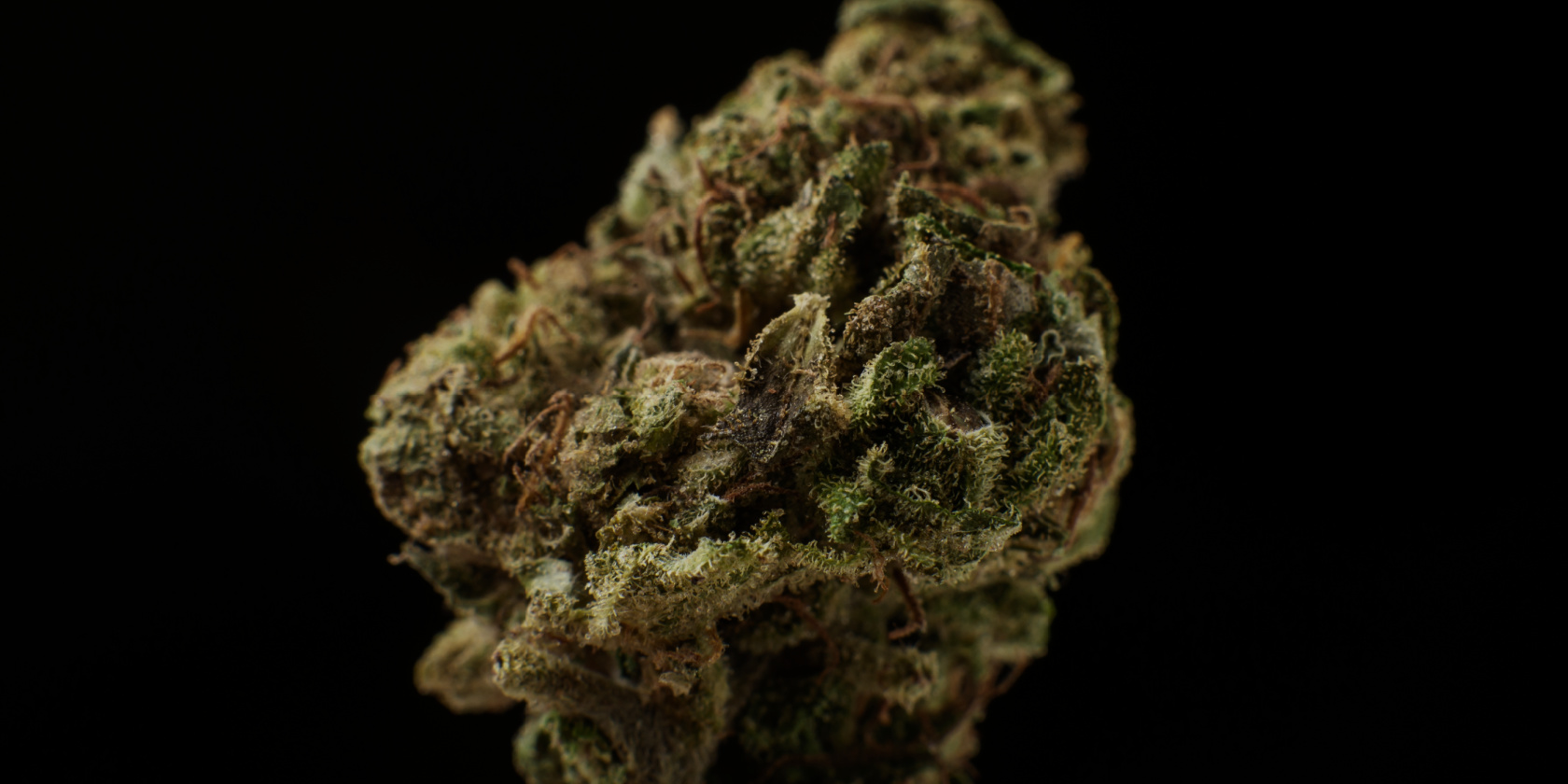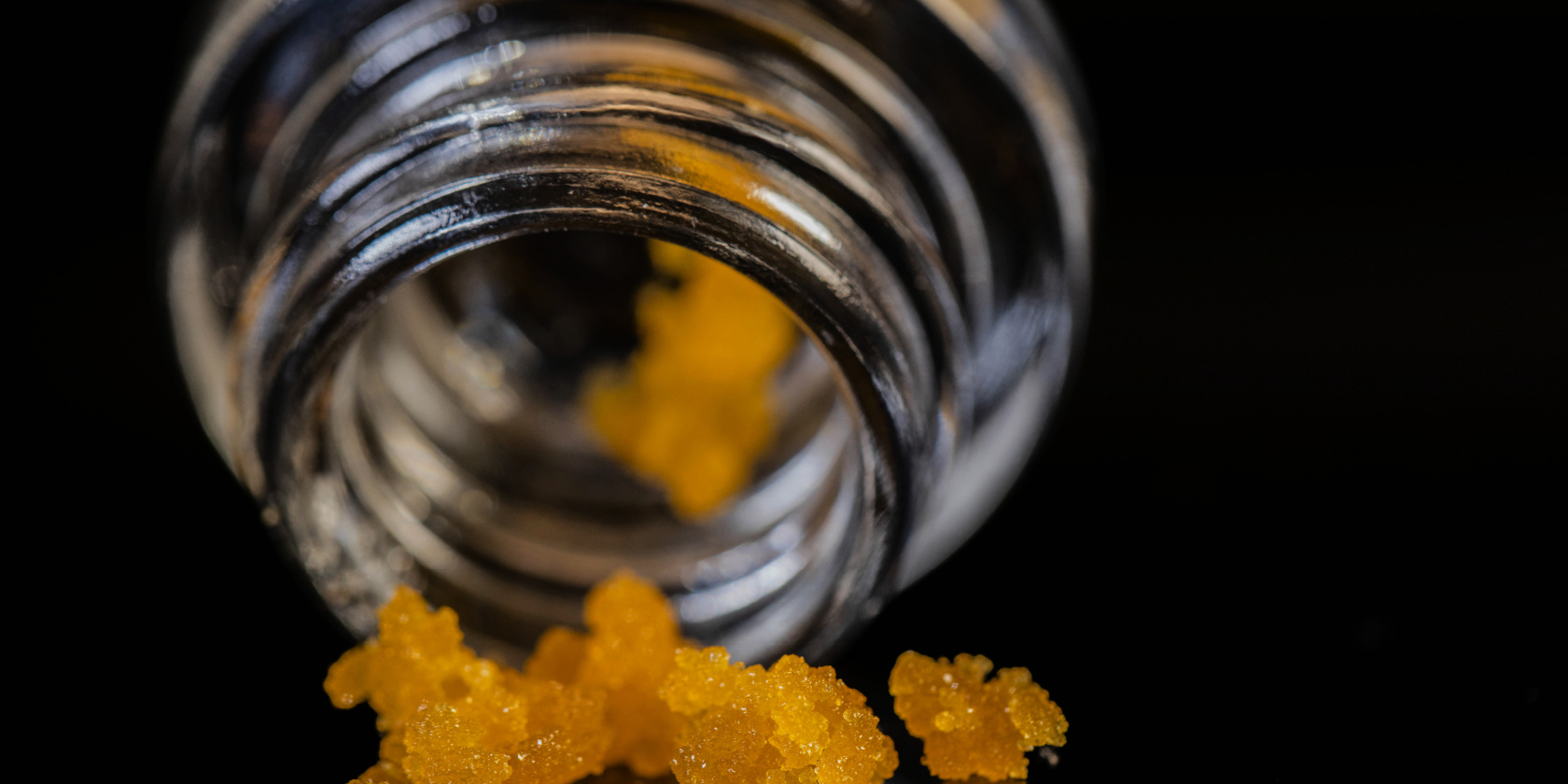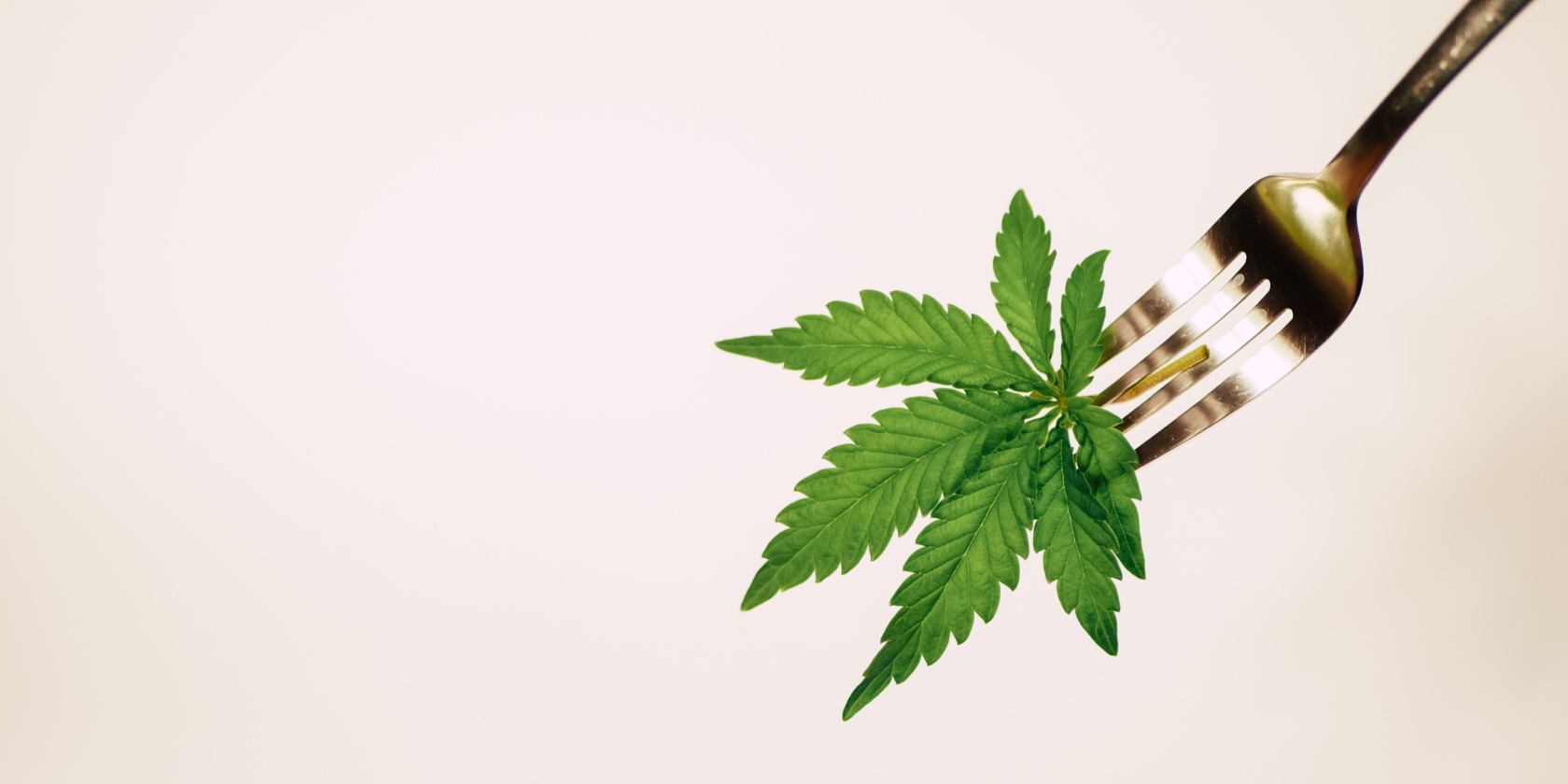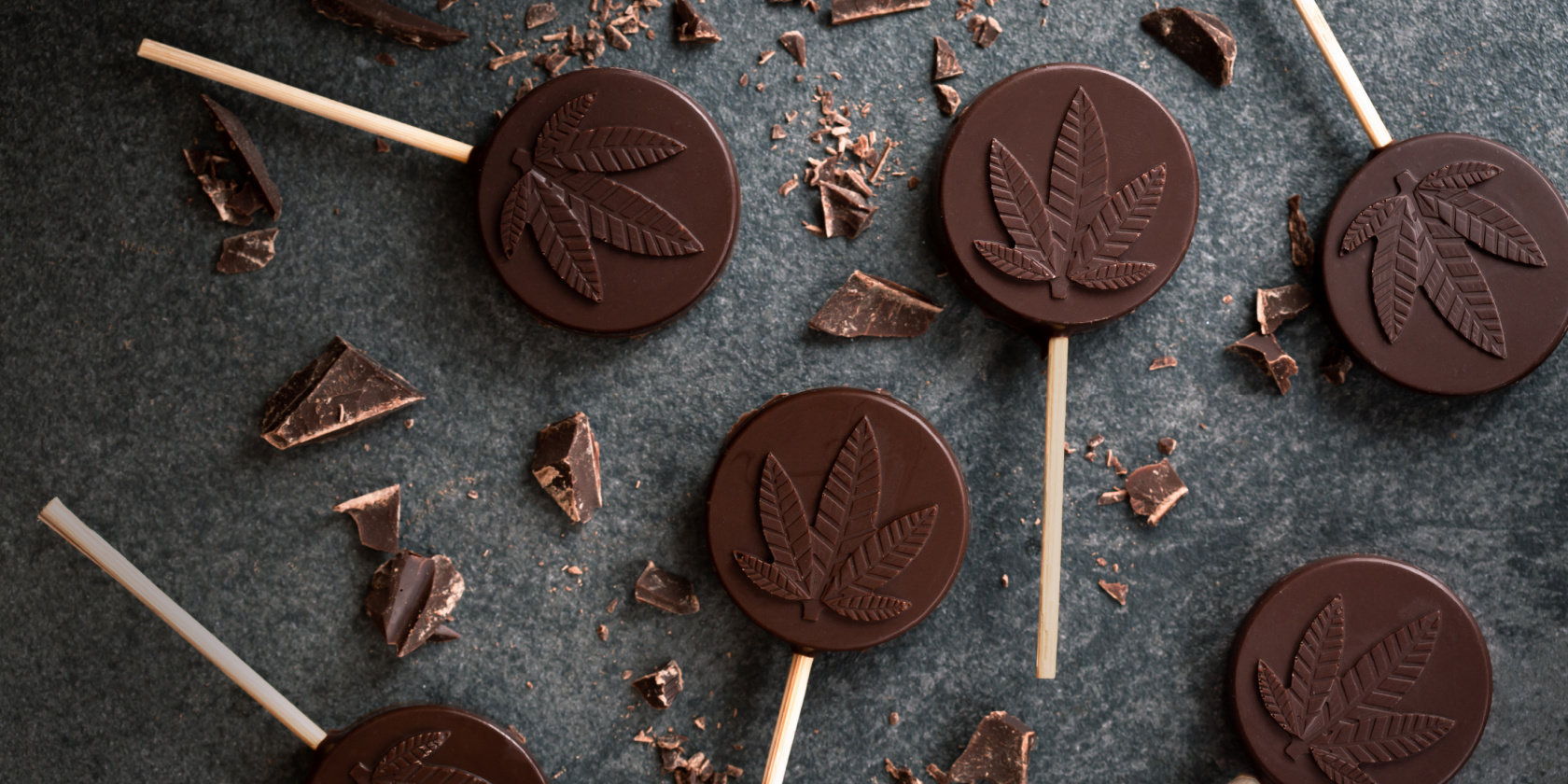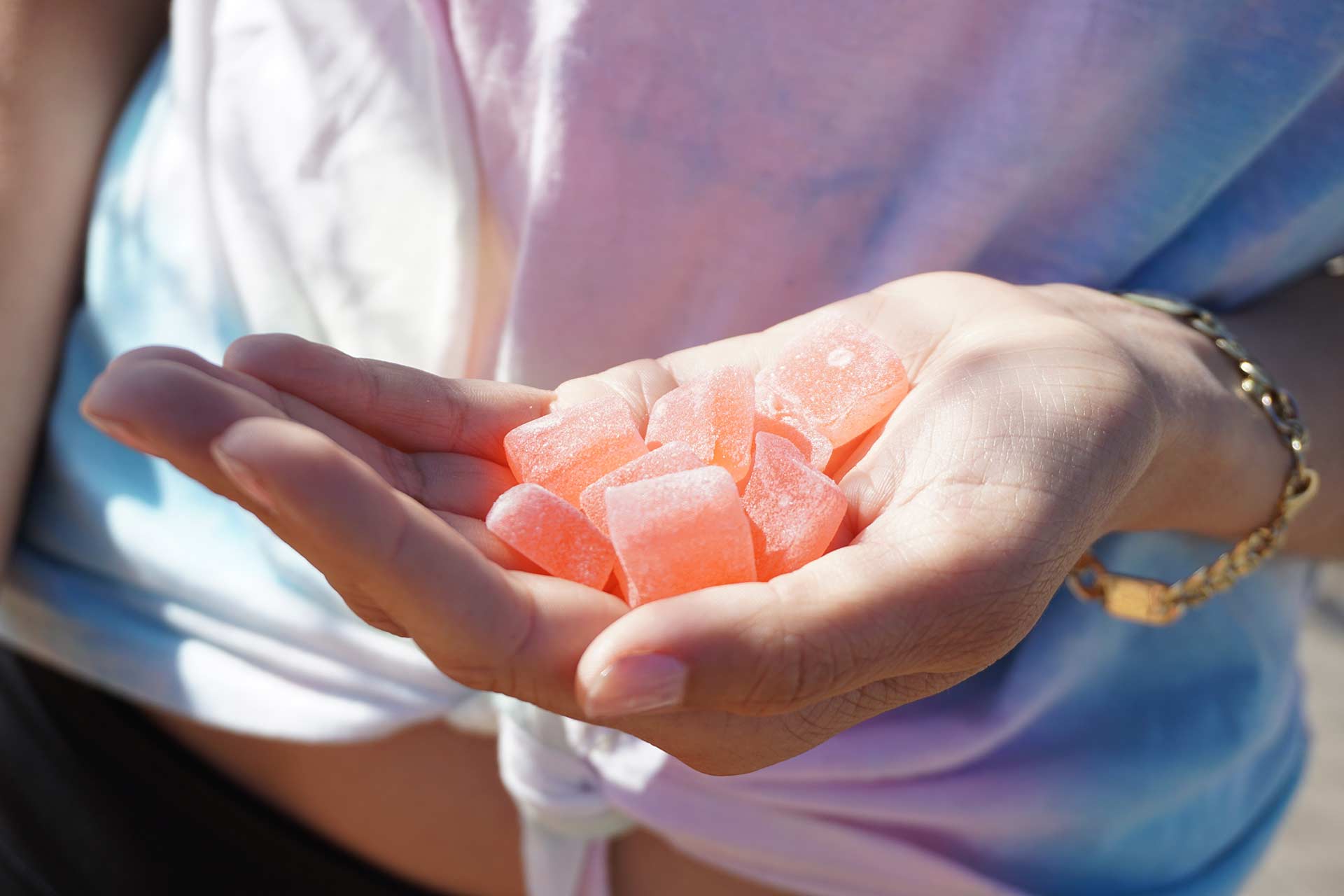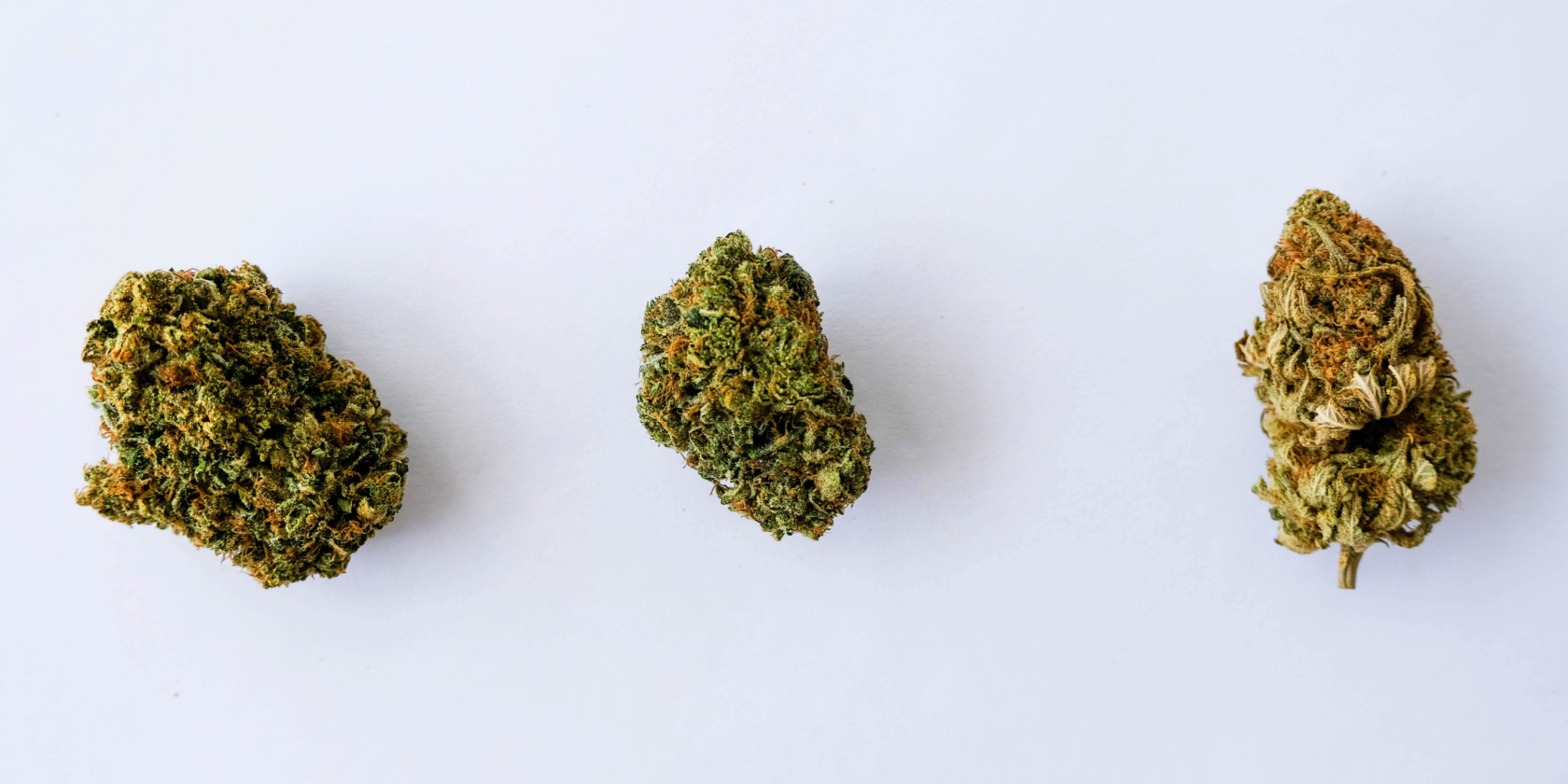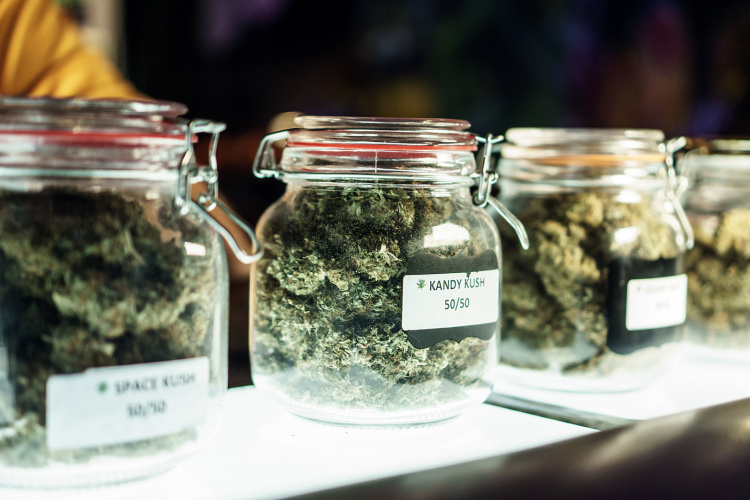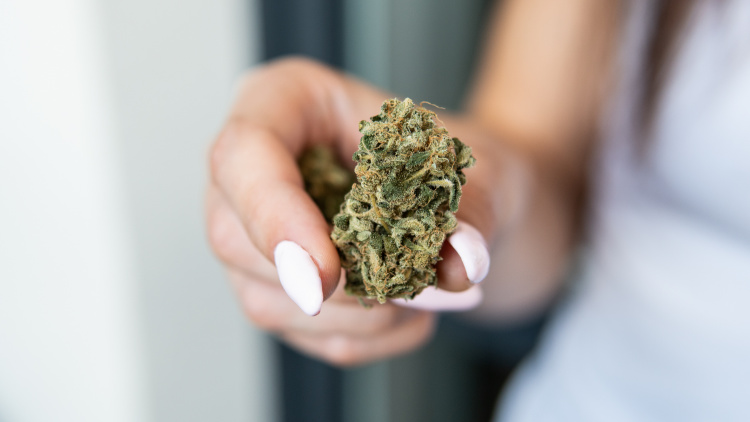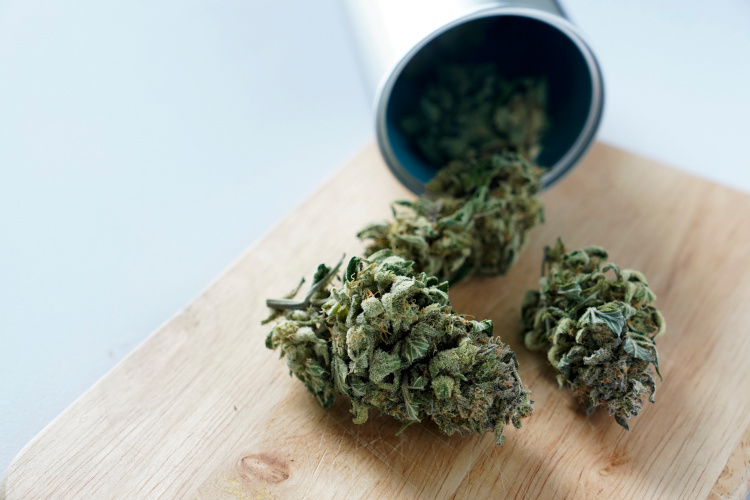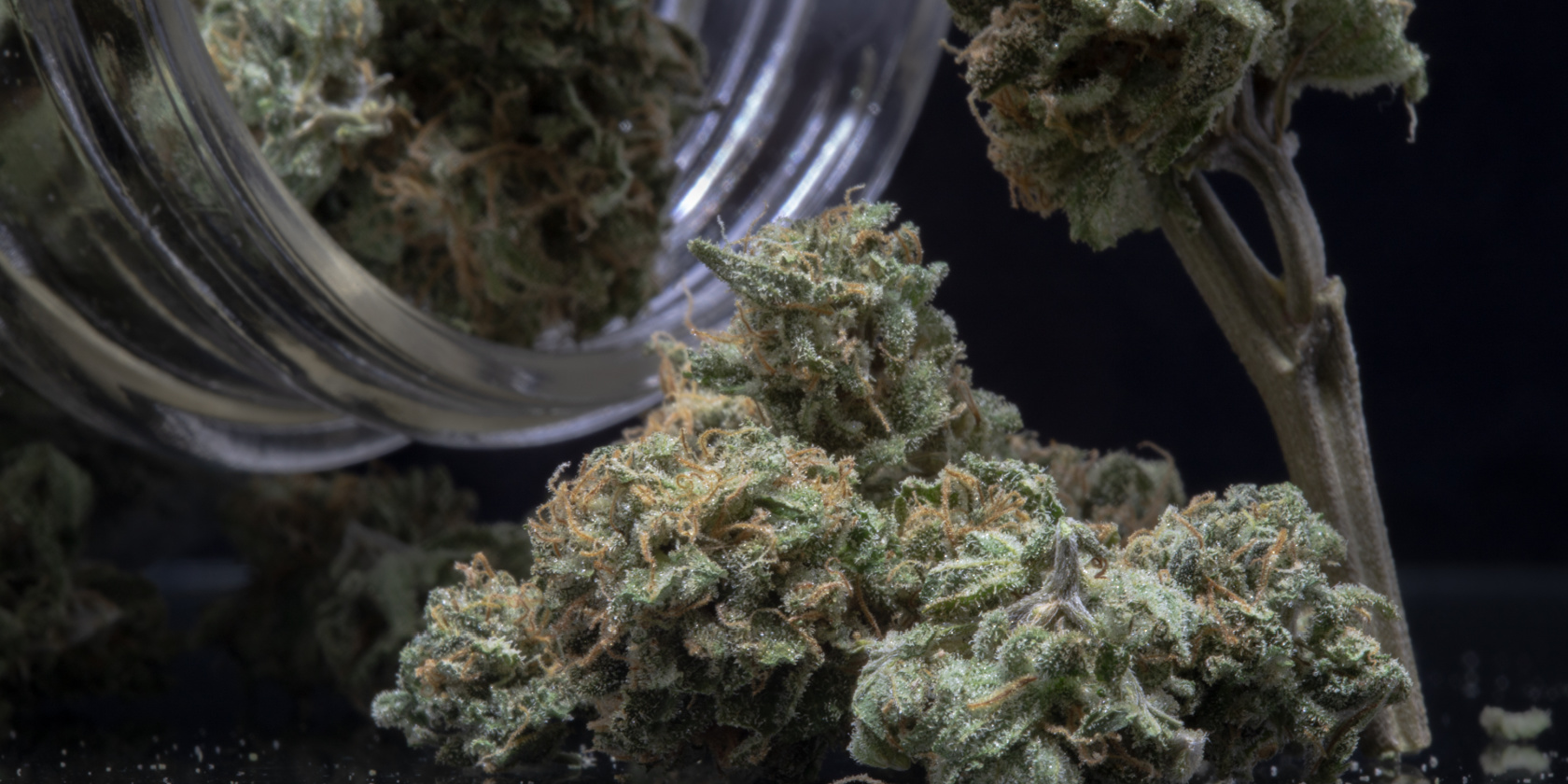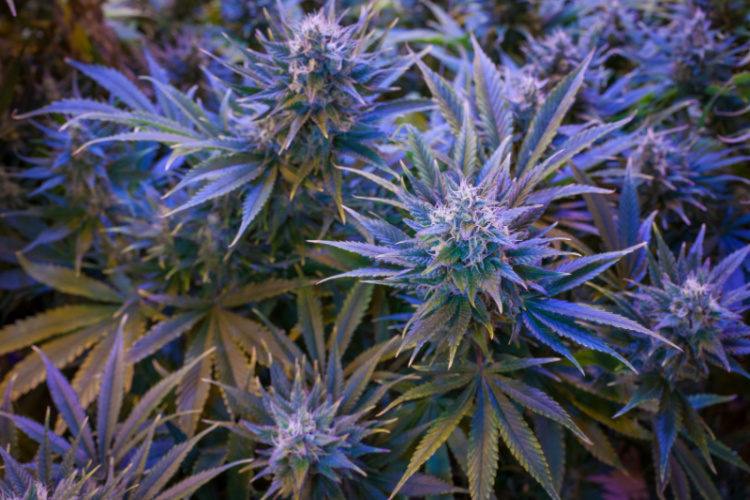Cannabis & Sleep: The Best Strains for Insomnia and Nightmares
In case you haven’t noticed, cannabis is all over the news these days. From new research suggesting medical cannabis may help fight pain and inflammation, ease anxiety, and control certain types of seizures, it seems there’s no end to potential uses for the cannabis plant. And this holds doubly true for one of the most prevalent health issues facing us today: Insomnia and related sleep disorders. Adding to a wealth of anecdotal accounts, a growing body of evidence suggests that using cannabis for sleep may be an effective and sustainable strategy.
Does cannabis help you sleep? If so, what are the best cannabis products for sleep? We’ll dig into these questions and others in today’s post. By the end, you’ll have a solid understanding on how to use cannabis for insomnia and other common sleep disorders.
Insomnia: An Introduction
Insomnia has several subtypes, but the simplest way to categorize the disorder is to define insomnia as: “inability to fall asleep and/or stay asleep.” In truth, insomnia is a complex group of sleep disorders. While many of us find the variations on the possible causes frustratingly familiar and difficult to differentiate, the reality remains: an estimated 70 million Americans suffer from insomnia or other sleep disorders at any given time, and insomnia can be notoriously difficult to treat.
If you or someone you love has ever suffered from insomnia, you’re probably familiar with the countless remedies currently available. Ranging from gentle homeopathic drops to powerful—and potentially risky—pharmaceuticals such as benzodiazepines, none can be said to be 100% safe and effective. But as we’ll see, the growing acceptance of medical cannabis is fueling hopes that it might prove to be an effective and sustainable solution. First, though, it’s useful to understand that cannabis isn’t a single medicine, but many medicines in one plant.
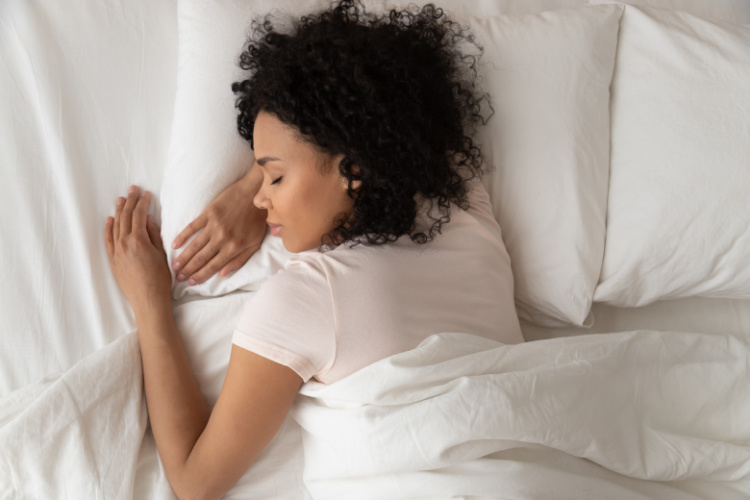 Cannabis for Sleep: What the Science Says
Cannabis for Sleep: What the Science Says
We tend to think of cannabis as a single drug, but the truth is a bit more complicated. The cannabis plant actually contains several-hundred compounds—including cannabinoids, terpenes, and flavonoids. As far as cannabis for insomnia goes, the two most important compounds to know are the cannabinoids THC and CBD.
THC is the compound most directly responsible for cannabis’ distinctive “high.” By comparison, CBD is mildly psychoactive, delivering at most a very gentle cerebral “buzz.” That’s why CBD on its own is legal in all 50 states and the District of Columbia. In addition to their subjective effects, both THC and CBD deliver a wide range of medical benefits, several of which we outlined earlier in this article.
To understand how cannabis may affect our sleep, it’s useful to keep those two cannabinoids in mind. While the federal prohibition of cannabis has hampered research into its use for insomnia, we do know that THC and CBD exert different effects on our sleep cycles.
For instance, one sleep study found that cannabis with a higher ratio of THC to CBD reduced the amount of test subjects’ rapid eye movement (REM) sleep. Why is this important? It turns out that REM is the sleep stage in which people experience dreams, and the theory is that by reducing dreams, sleepers spend more time in a restorative “deep sleep” state.
This also ties in to the issue of nightmares. In addition to being unpleasant and unsettling, nightmares are a major cause of sleep disruption. Just like other dreams, they occur during REM sleep. A reduction in REM sleep seems to correlate with fewer nightmares—a finding supported by a separate, small-scale sleep study.
Then there’s the subject of post-traumatic stress disorder, or PTSD. While the intersection between cannabis and PTSD is a wide-ranging topic in and of itself, research suggests that moderate cannabis use is by and large an effective response to PTSD-related sleep issues.
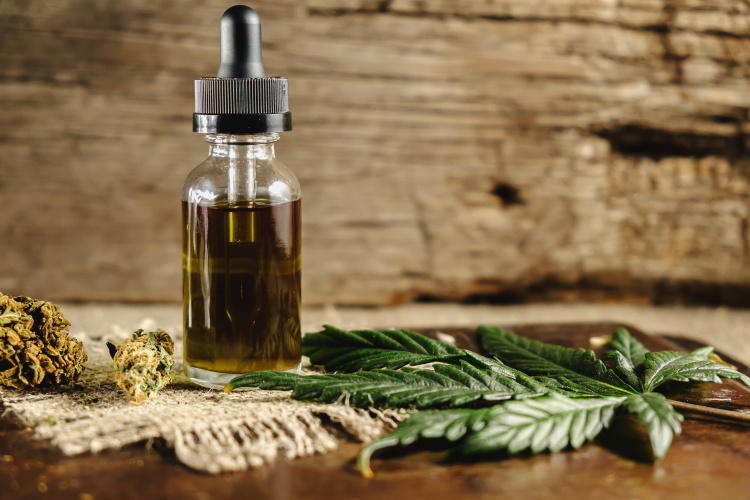 CBD for Sleep
CBD for Sleep
Thus far, we haven’t addressed the topic of CBD and sleep. However, we mustn’t miss the promising potential of this important compound. There’s some evidence that the “second cannabinoid” may be even more beneficial than THC for sleep. One study from 2017 found that CBD may hold promise for reducing REM-related sleep disorders and quelling excessive daytime sleepiness. A large-scale study from 2019 found that CBD helped reduce anxiety—a major factor in sleep disruption—and improved sleep scores in most of the test subjects.
Taken together, the research suggests that by carefully tailoring cannabis ratios for the physiologies and needs of individual patients, clinicians could usher in a new era of gentle, sustainable, and effective treatments for insomnia and other sleep disorders.
Given what we know about cannabis for insomnia, we can make some educated choices about specific cannabis products. And this local team—at the District of Columbia’s longest-running medical cannabis facility—has some suggestions.
 Best Cannabis Products for Sleep: Specific Recommendations
Best Cannabis Products for Sleep: Specific Recommendations
Standard: Sleep, by Abatin Wellness
Specifically formulated to encourage deep and restful sleep without grogginess, this tincture contains a precise mixture of the cannabinoids THC, CBD, and CBN. They’re empowered by specific terpenes, the aromatic compounds in cannabis and other natural products, geared towards relaxation and rest.
Granddaddy Purple Cartridge, District Cannabis
This much-loved indica strain delivers a potent hit of cerebral dreaminess and full-body relaxation. Known for a strong “couch lock” effect, it’s just the thing to get you tucked into bed for a night of deep, restorative, and long-lasting sleep. This cartridge contains .5g of concentrate, and is designed to fit a standard 510-style vape pen.
Classic Cookies, Abatin Wellness
An alternate name for GSO—itself an alternate name for the trademark-protected “girl scout cookies”—this legendary strain is known for imparting a deep and long-lasting euphoria. Its legions of fans turn to it for reliable relaxation, a head-to-toe calming effect, and the lure of a restful night of sleep.
Pre-Roll 6-Pack: Gelato Cake, District Cannabis
Yet another strain with a fervent fanbase, this cross between Gelato and Wedding Cake comes in a beautiful handmade case of prerolls for your convenience. Packing a hefty dose of relaxing THC, Gelato Cake’s delicious flavor profile—think sweet crushed grapes and aged cognac—is primed to ease you into deep, stress- and pain-free sleep.
Best Cannabis Products for Sleep: Wrapping Up
Whether you’re comfortable with the psychoactivity of THC or prefer the gentler, stress-reducing effects of CBD, the best cannabis product for sleep that will suit you to a T is out there waiting for you. If you’d like more guidance, check with the team at Washington, DC 's longest-running medical cannabis dispensary for expert recommendations and a stellar lineup of cannabis products!
Understanding Weed Terpenes: A Foundational Guide
We’ve talked about a few of the most important compounds in cannabis before: cannabinoids such as THC and CBD that give the plant its medicinal and euphoric effects. But while we sometimes describe the cannabinoids as the major “active ingredients” in cannabis, they’re hardly the only piece of the puzzle. If you’re new to cannabis or looking to deepen your knowledge, it’s time to get familiar with cannabis terpenes.
A large family of aromatic oils, cannabis-derived terpenes are best known for giving different strains their distinct aromas and flavors. Behind the scenes, these compounds also lend powerful medicinal benefits to the cannabis plant’s already potent effects. Let’s dive in!
What Is a Cannabis Terpene? An Introduction
In scientific lingo, terpenes are aromatic hydrocarbons—what many of us might call “essential oils”—found in the cannabis plant. They’re produced and secreted by trichomes, the same tiny silvery glands that produce THC, CBD, and other cannabinoids.
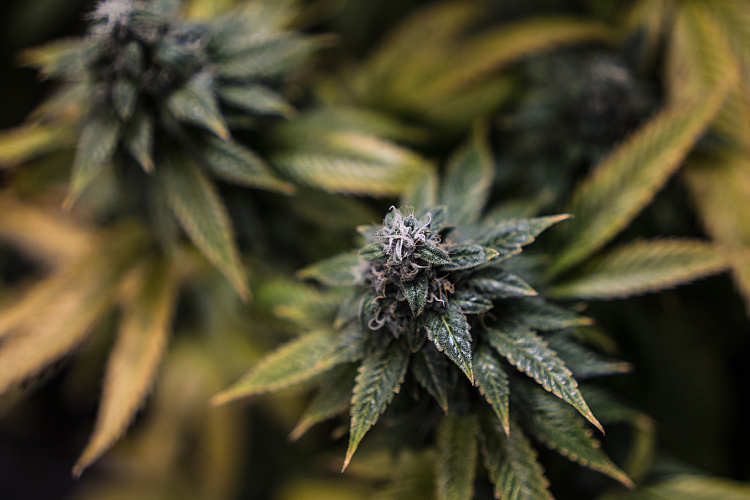
But terpenes are hardly unique to cannabis. If you’ve ever wondered why cannabis can smell like fresh fruit, Christmas trees, or even Diesel fuel, terpenes are the common denominator. They occur in countless natural flora, and even in some insects and animals! In fact, some botanists believe that terpenes are the single largest and most diverse group of natural products on the planet. For the purposes of this post, we’ll stick with the topic of cannabis-derived terpenes.
As we’ve hinted, terpenes do more than simply add enticing flavors and aromas to cannabis. Research suggests that terpenes work in partnership with cannabinoids in what’s termed the “ensemble” or “entourage effect” to produce specific therapeutic results. While still theoretical, a growing body of evidence supports the concept, and it may hold the key to future therapies based on cannabis-derived terpenes.
What Is a Cannabis Terpene? Meet the Top Five
There are a great many terpenes in cannabis (at least 150 of them)! Today, let’s begin with the five most common:
Myrcene
Just as THC is the most abundant cannabinoid in cannabis, myrcene is its most abundant terpene, meaning it is found in some concentration in the majority of strains. Characterized by a fruity and grapelike flavor, myrcene is gently sedative. What’s more, this terpene synergizes and helps potentiate the actions of other terpenes and cannabinoids, making it a crucial player in cannabis’ active ingredient ecosystem.
Myrcene-rich strains include: Skunk XL, White Widow, and Special Kush
Alpha-pinene and Beta-pinene
Known collectively as “pinene,” these related terpenes are identified by their distinctively piney aroma. You’ll also find this terpene in pine trees, orange peels, and herbs such as basil and rosemary. Studies suggest that pinene exerts a gentle anti-inflammatory effect, reducing inflammatory responses such as asthma.
Pinene-rich strains include: Strawberry Cough, Blue Dream and Dutch Treat
Caryophyllene
This spicy and peppery terpene is being investigated for its analgesic and anxiolytic effects. It also binds to our cells more readily than many other terpenes, making it a valued ingredient in some topicals and balms.
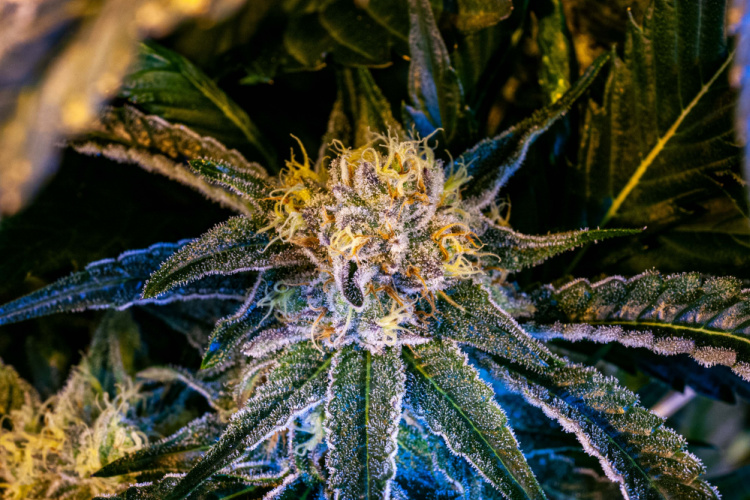
Caryophyllene-rich strains include: Super Silver Haze, OG Kush, and Rock Star
Limonene
Bright and cheerful-smelling, this citrus-scented terpene adds its uplifting effects to many cannabis strains. Clinical studies underscore its potential use to reduce stress and anxiety. And believe it or not, at least one study suggests limonene may have a role to play in fighting COVID-19.
Limonene-rich strains include: Sour Diesel, Durban Poison, and Jack Herer
Linalool
A main component in the classic “marijuana smell,” linalool may also help fight anxiety and depression. Research suggests this important, cannabis-derived terpene might also help reverse the cognitive impairment and memory loss associated with neurodegenerative disorders such as Alzheimer’s Disease.
Linalool-rich strains include: Amnesia Haze, Special Kush, and Lavender
Cannabis Derived Terpenes: Wrapping Up
We hope this introductory guide on cannabis terpenes has been helpful! Not just the flavor and aroma powerhouses of the cannabis plant, these compounds are showing therapeutic promise all their own and may be key to understanding how cannabis offers its multifaceted effects.
Do you have other questions about terpenes (or anything else in the world of cannabis)? Just ask! We’re here to help. You can always visit our dispensary to learn more about terpenes from our friendly and knowledgeable team, or peruse our online menu to see what we’ve currently got in stock. We look forward to serving you!
Microdosing THC: How to Access the Health Benefits (Without the High)
A growing number of cannabis consumers are finding that less truly is more when it comes to THC. Rather than reaching for the “biggest bang,” they’re using tiny—even barely perceptible!—amounts of THC while still accessing the plant’s many benefits.
How low can you go when it comes to dosing THC? The extreme version of this trend is called “microdosing THC,” and it’s a fascinating and potentially impactful way to get the benefits of cannabis without the potential distraction of an intoxicating high.
This isn’t merely wishful thinking. As a growing body of evidence suggests, the majority of people actually derive greater benefit from lower dosages of cannabis. If you’re looking to fight pain and inflammation, reduce anxiety and stress, or find deeper, more restorative sleep, you’ll generally get better results (and stretch your cannabis dollars further) by using less.
In today’s post, we’ll share everything we know about how to microdose THC, including best practices, potential benefits of microdosing THC, and specific products that make it easy to do. You may be one of the many who find that using tiny amounts of cannabis actually imparts more lasting and sustainable benefits than using a lot.
Ready? Let’s begin.
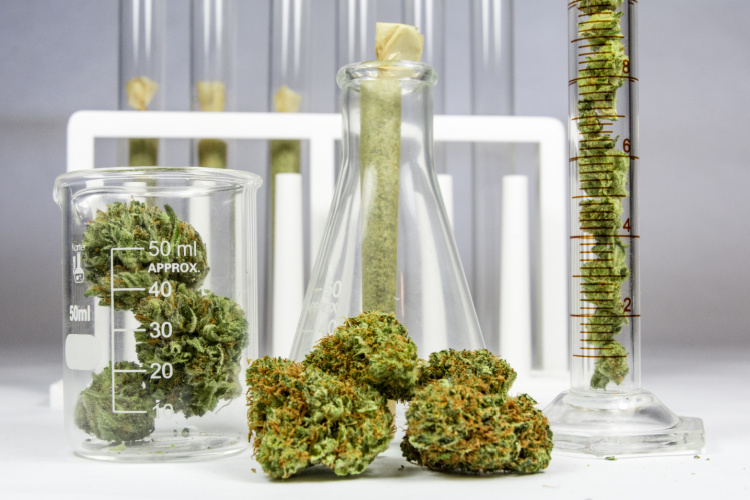 Benefits of Microdosing THC: Basic Principles?
Benefits of Microdosing THC: Basic Principles?
The concept behind microdosing THC is fairly simple: While we know that cannabis compounds such as the cannabinoids THC and CBD (as well as terpenes and other components) can impart beneficial medical effects, the psychoactive effect of consuming THC—what most of us refer to as “the high”—can be distracting or unwelcome in certain circumstances.
What inspired microdosing? The concept of microdosing THC was initially inspired by the practice used with hallucinogens such as LSD or psilocybin mushrooms, both of which have demonstrated a number of potential benefits.
While we offer a wide range of non-intoxicating high-CBD or CBD-only products, sometimes it’s preferable to consume very small amounts of products that contain multiple cannabinoids instead. That’s where microdosing THC comes in. It consists of consuming a very minimal dose of a high-THC product. At appropriate doses, many microdosers find the subjective effects subtly enjoyable yet effective over a longer period than they might normally.
What does the research say? One study from 2012 found that tiny doses of the synthetic cannabinoid-based medication Nabiximols provided better pain relief than traditional opioid-based painkillers. Another study published in 2014 found that extremely low doses of another synthetic cannabinoid compound (Nabilone) produced a “significant improvement” in symptoms of post-traumatic stress disorder (PTSD).
The fact that these two studies incorporated synthetic cannabinoids may be more of a reflection of the challenges of conducting cannabis research than a statement about cannabinoids themselves. For instance, a 2017 study found that lower doses of THC produced far better outcomes than higher ones in a mock job-interview scenario.
What are some ways you might incorporate the benefits of microdosing THC into your daily routine? Let’s take a closer look.
How to Microdose THC: Subjective Effects
If you’re thinking about microdosing THC, there are a few things you should keep in mind in order to increase the odds of a truly beneficial outcome. Microdosing THC is all about calibration. Rather than maxing out THC levels for an overwhelming mind/body experience, the small doses associated with microdose THC are designed to deliver predictable, consistent, and, most of all, sustainable effects.
The effects of microdosing are generally far more subtle than a full dose of THC, and can vary from person to person depending on several factors including the cannabis strain, dosage level, and your personal tolerance. In general, the effects are more subtle and controlled, allowing you to experience the possible therapeutic benefits of THC while continuing to go about your day unimpeded by the intoxicating effects.
When we discuss the possibility of microdosing with our Washington, D.C. dispensary customers, the first question we often hear is: “What does microdosing THC feel like?” The answer is that consuming a microdose is a much more relaxed and less intoxicating experience than ingesting a regular dose. The intense euphoric, intoxicating, and mind-altering effects associated with cannabis are much milder—and sometimes barely noticeable—when using microdose THC. This can be a huge boon for people who don’t really want to feel “high,” especially in daytime or work environments.
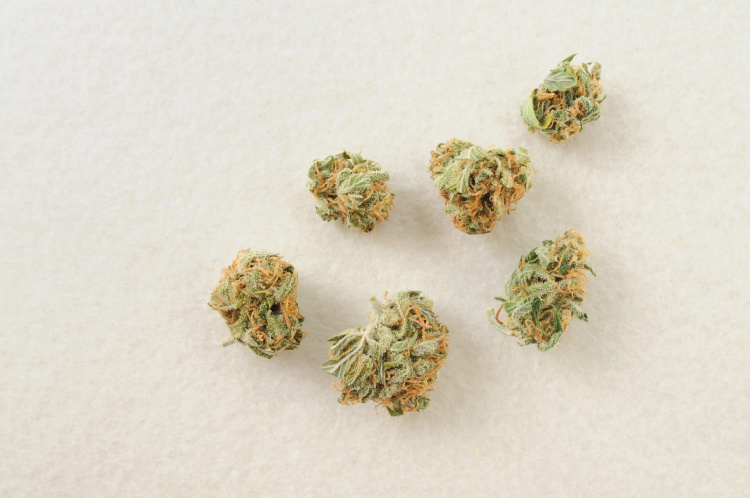 How to Microdose THC: Best Practices
How to Microdose THC: Best Practices
Microdosing cannabis can be a great strategy for people who need to perform on a high cognitive level throughout the day. Many of our customers report that microdosing THC not only allows for a clear state of mind, but may help foster an calmly alert and focused state. A clear mind is one of the most sought-after microdosing benefits and in our experience, a big reason why many people turn to microdosing THC in the first place.
Once you get used to the experience of microdosing cannabis, you may find that in certain situations a microdose can be more than enough to impart gentle benefits. For example, those who use cannabis to help manage symptoms of anxiety and may find that THC actually worsens their symptoms. As we referenced earlier, research indicates that using minimal THC is a far more reliable way to derive maximum benefit from this potent plant-based medicine than taking a lot of it.
Speaking of which, how much is too much? As we explain in our Edibles Dosing Guide, microdose THC amounts typically fall in the 1 mg to 2.5 mg range. Sound like too little? Hardly. One 2020 study on pain management found that even a 1 mg dose of THC produced a significant decrease in pain compared with a placebo.
Is it “bad” to feel slight intoxicating effects while microdosing THC? That’s entirely up to you. If your goal is maximum mental clarity and focus, then we’d recommend dialing your dosage down until you can’t detect any psychoactivity whatsoever. But if you find you tolerate a little “buzz,” you can try increasing the dosage until the effects are just barely perceptible.
As with all uses of cannabis for specific outcomes, it’s helpful to approach microdosing with a bit of a “scientist mind.” Take your time assessing the effects, being mindful that you may actually feel the results the following day.
We recommend you begin with the lowest dose for a few days or a week. If desired, increase your dose by a tiny increment after at least three days if you aren’t experiencing the desired effects. If you’re convinced you require a second dose on the same day, we recommend you wait at least two hours after taking the first one to avoid potentially taking too much. At these low doses, the effects are unlikely to be extreme, but we’re committed to you getting the maximum benefit from cannabis, no matter what dosage you’re working at!
Remember: Whether you’re microdosing THC for the first time or starting up a new regimen, the smallest dose possible is a good place to start. Remember, too, that our bodily physiology can change over time. After taking a break, it’s wise to reset to the lowest dose every time you start a new round of microdosing.
Pro Tip: If you’re looking for an informative and interesting read on the subject of microdosing, here at the dispensary we especially enjoyed Danielle Simone Brand’s book: Weed Mom: The Canna-Curious Woman’s Guide to Healthier Relaxation, Happier Parenting, and Chilling TF Out.
Microdosing THC: Specific Consumption Methods
Here’s something to consider: Not all cannabis consumption methods yield the same results.
When you smoke or vape cannabis (whether in large or microdose amounts), you will generally feel their effects much more quickly than with other consumption methods, typically within a matter of minutes. However, unless you take the time to carefully weigh each dose with an extremely precise scale, it can be hard to tell just how much THC you’re actually ingesting, causing you to ingest more than you intended.
That’s a major reason we prefer other consumption methods for microdosing, such as tinctures and oils. This liquid format allows you to measure your doses much more precisely, so you can dose accurately and consistently.
Edibles can be a great alternative as well, especially those that are already portioned in individual servings. However, edibles—especially when homemade—can be inconsistent when it comes to accurate dosing since the distribution of cannabis throughout an edible may not be perfectly even.
Lastly, while microdosing THC may be what many are seeking to do, that doesn’t mean that the benefits of microdosing are limited to just THC. Microdosing CBD or a combination of THC and CBD may also yield great results. Ultimately, it’s up to you to experiment a little and find out what works best for your situation, your goals, and your physiology.
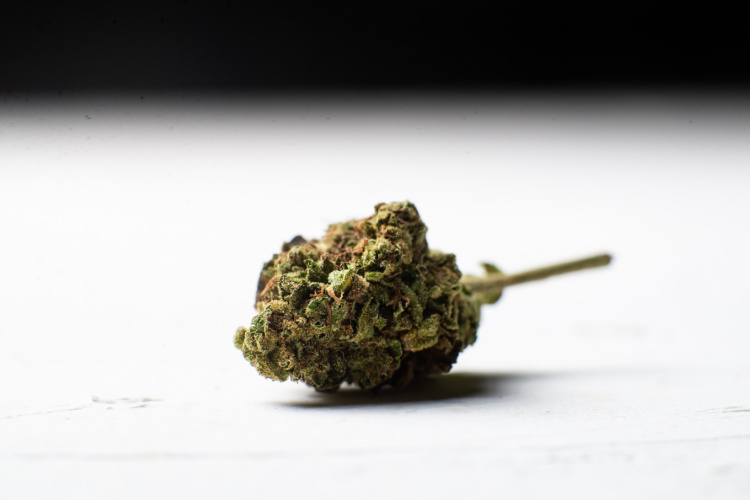 Benefits of Microdosing THC: How to Get Started
Benefits of Microdosing THC: How to Get Started
First things first: If you’re not already in our system, let’s get the process rolling with some brief intake forms for new patients. They’re quick and easy—we promise!—and they’ll help us understand your needs and goals. If you need a temporary medical marijuana card, we can even help. Simply register for an immediate 30-day Visitor Pass ($30 paid to the city) today.
As with any change in your wellness or supplement routine, you should always check with an expert who understands the ins and outs of consumption to see if cannabis microdosing is right for you. One of our qualified Patient Consultants will help you determine if cannabis microdosing is right for you and show you how to start microdosing.
Once you’ve got the professional go-ahead, take a minute to check out some of our favorite high-CBD and low-THC products. Whichever products you choose, the experienced budtenders at our Washington, D.C. dispensary are here to help guide you through your cannabis microdosing journey.
Microdosing THC: Bringing It All Back Home
Why microdose THC? As we’ve covered, there are many reasons! Some people enjoy the relief microdosing can provide for bodily conditions such as relief from chronic pain or inflammation. In contrast, others turn to microdosing for conditions such as insomnia, anxiety, and depression. Either way, a large and growing body of evidence suggests that microdosing THC may impart lasting benefits.
And, if you’re new to the world of cannabis consumption, microdosing can be a great way to learn your own tolerances and discover the right level of THC to suit your individual needs.
If you’re interested in getting started, we’d love to help! As Washington’s #1 family-run medical marijuana dispensary, we’re dedicated to helping you get the very most from your cannabis experience. Have any other questions about microdosing THC (or any other cannabis-related topics)? Just ask!
Weed Concentrates: Benefits & Effects
Cannabis concentrates have become some of the most popular items at our dispensary—and it’s no surprise why. Not only can they be aromatic and flavorful but the effects of cannabis concentrates are usually quite potent and hard-hitting, which many customers love.
What Are Cannabis Concentrates?
Concentrates are highly potent cannabis products that produce intense effects and bold flavors. Concentrates are primarily made by collecting the resinous trichomes of the cannabis plant. The benefits of cannabis concentrates are imparted thanks to the large volume of cannabinoids and terpenes gathered from these fresh, crystalline trichomes.
There are a few ways trichomes can be collected. For example, while rosin is made by using heat and pressure to squeeze that resin out, kief is made by simply shaking those trichomes loose with agitation and collecting the fine powdery residue they produce. More on types of concentrates later: Let’s start with the benefits of concentrates.
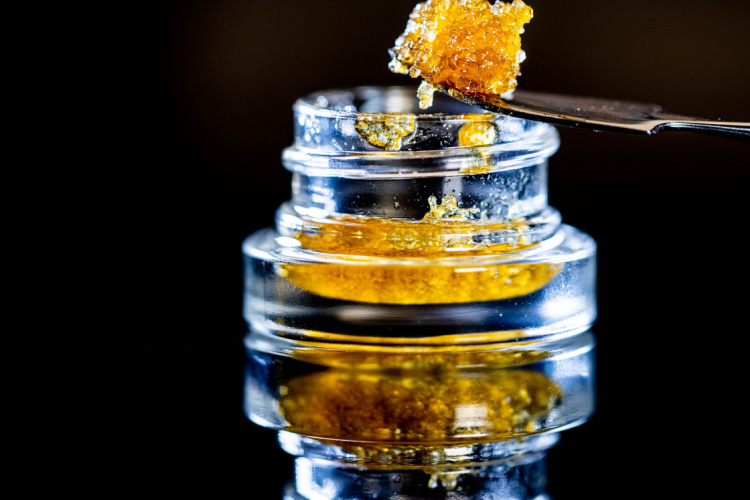 The Benefits and Effects of Cannabis Concentrates
The Benefits and Effects of Cannabis Concentrates
Why use a cannabis concentrate? Most people who enjoy concentrates are looking for a strong and efficiently-delivered cannabis product. If a dab of shatter clocks in at 70% THC but some cannabis flower only possesses 20% THC, that means the one dab would produce over 3 times the effect through the same inhalation of smoke or vapor.
Additionally, thanks to a high terpene content, hits of concentrates can be delightfully flavorful and possibly more therapeutically effective, as a concentrate can contain a higher concentration of terpenes than a small bud of regular cannabis flower can.
While potency is a benefit of concentrates that can be particularly useful for patients who need high doses of THC to manage symptoms, it’s wise to exercise care with concentrates. With high potency also comes a higher chance that you inadvertently consume too much. If you’re new to concentrates start with very small doses and always give your body plenty of time to feel the full effects before consuming more—start low and go slow!
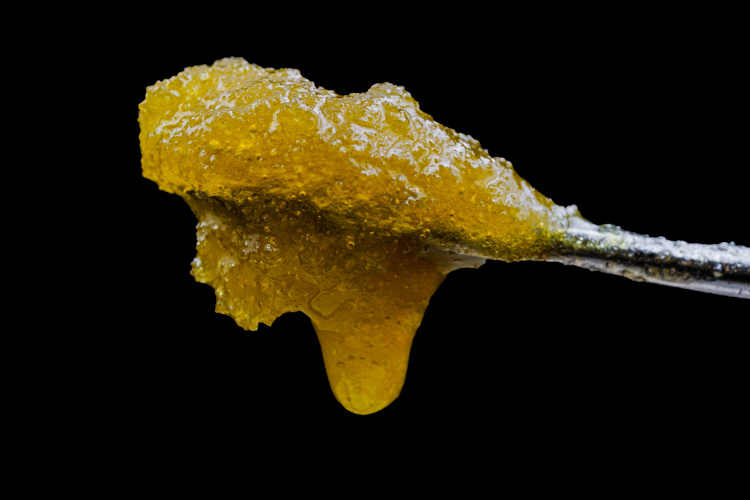 Different Types of Concentrates
Different Types of Concentrates
There are many different types of cannabis concentrates. A concentrate’s type is typically determined by the methodology with which it is made. Because of this, concentrates can vary in form and texture, even though they may contain similar levels of cannabinoids and terpenes. There is no “best cannabis concentrate” because which formulation you prefer can depend on your personal tastes.
Here are some of the many different types of concentrates that you may come across at our dispensary.
Kief: Kief is a powdery collection of cannabis trichomes that have been shaken loose from flower buds. You can even collect kief for bud yourself with a kief catcher. Kief is the least potent concentrate out there, usually clocking in at between 25%–35% THC.
Hash: Hash is the oldest concentrate on earth, having been smoked for many centuries. It’s made by collecting the loose trichomes that make up kief and squeezing them together into a solid block or chunk. Hash can also come in a loose form called ‘bubble hash’ or dry sift hash. Hash is usually more potent than kief but less potent than most other concentrates, typically coming in somewhere between 35%–55% THC.
Shatter: Shatter is a popular concentrate made using a BHO (butane) extraction process. It gets its name from its glass-like form, which is a thin sheet of solidified oil that shatters into many small pieces when handled. Shatter typically has a THC percentage landing between 50% and 80%.
Rosin: Rosin is a sticky and terpene heavy concentrate that packs in a lot of flavor. It’s made using a solventless extraction process and has become a favorite among health-conscious consumers looking for a solvent-free extract that features bold flavors. Rosin usually ranges from 60% to 70% THC.
RSO: RSO, also known as Rick Simpson Oil, is a thick and sticky cannabis oil that is rich in THC and has a reputation for potent medicinal properties. It’s got a syrupy and thick consistency and usually comes in a syringe from where it can be applied sublingually or transferred to other foods and liquids. While RSO is usually high in THC, it can also be CBD-dominant.
Distillate: Distillate is a concentrate made through a complicated distillation process that methodically separates THC from every other compound found in the source plant material. Because this extraction process is so successful at isolating THC, many distillate oils can reach incredible potency levels of roughly 99% THC.
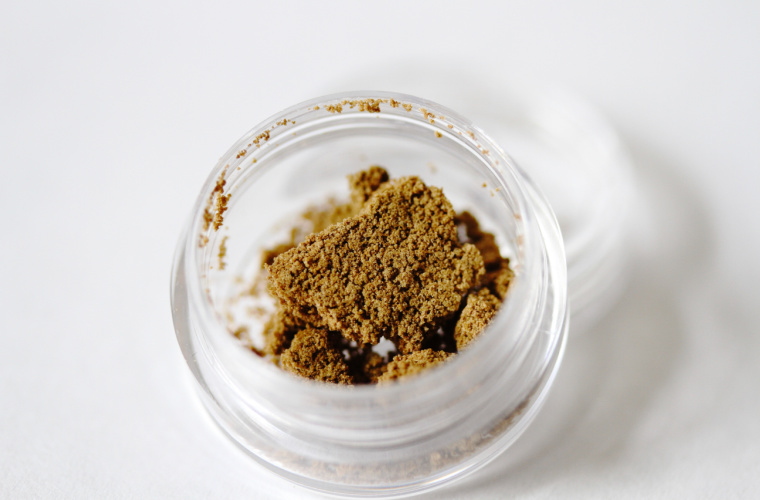 Cannabis Concentrates at Takoma Wellness
Cannabis Concentrates at Takoma Wellness
Ready to experience the potent effects of cannabis concentrates and benefits of cannabis concentrates for yourself? Our budtenders can help you find the cannabis concentrate that suits your individual needs and interests.
Come down to our dispensary today or (if you already have a concentrate type in mind) shop our online menu right now to choose from a wide selection of cannabis concentrates. We look forward to seeing you!
Cooking with Weed: A Complete Guide
Have you ever wondered what cooking with cannabis would be like? Crafting your own infused delicacies and looking forward to that extra-rewarding first bite? Luckily, learning how to cook with cannabis isn’t extraordinarily difficult. In this post, we’re going to look at the basics of cannabis cooking and share two important recipes that will enable you to make many different cannabis-infused treats.
Cooking with Cannabis: The Basics
Cooking with cannabis is just like regular cooking. There’s just one difference: THC. While it would be great to just mash some cannabis flower into a brownie and call it a day, that’s unfortunately not an option.
That’s because cannabis flower doesn’t actually contain THC. Instead, the plant develops THCA. This chemical precursor turns into THC when exposed to heat through a process called decarboxylation. That usually happens when you spark up some flower for a puff. However, since there’s no flame involved with edibles, you’ll need a “decarb” workaround.
How to Decarboxylate Cannabis Flower
The term “decarboxylation” may look scary on paper. But its bark is worse than its bite.
All you need to do to decarb cannabis is heat-activate it. That’s a two-step process. First, grind your cannabis with an herb grinder. Then, put it on a cookie sheet covered in wax paper. Bake it at 245 Fahrenheit for about 30 minutes. Mix it every 10 minutes to make sure it cooks properly. When all your cannabis is a light golden brown, you’re ready to rock.
Cannabis Cooking: Two Important Recipes and Tips
Now that we have the basics of cannabis cooking under our belts, we can get down to the fun business: recipes. THC is a highly lipid-soluble molecule. In other words, it binds readily to fats. Butter and oil both contain tons of fats. These are the foundational ingredients for any cannabis-infused product.
Having a recipe on hand for both cannabutter and infused coconut oil will give you two solid options for a versatile cannabis ingredient with which to infuse recipes. Armed with cannabutter or cannaoil, you can start baking or cooking with cannabis using any normal recipe that calls for butter or oil.
Before you begin: Always label your infused products clearly, so no one accidentally uses a cannabis product. Keep out of the reach of children. Store cannabutter or canna oil in the fridge or freezer.
How to Cook with Cannabis: Cannabutter
Cannabutter is a classic medium for carrying THC. Countless recipes use normal butter, which you can substitute with cannabutter super easily. Here’s how to make it.
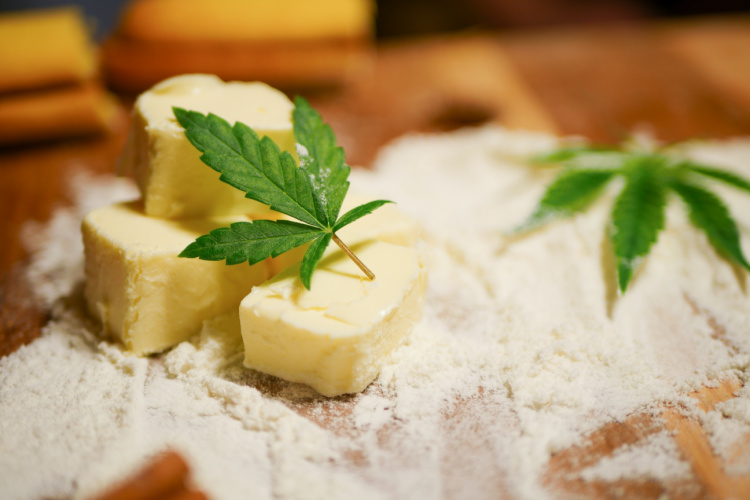
Ingredients:
- 7 grams decarboxylated flower
- 1 cup butter
- 1 cup water
Instructions for Making Cannabutter:
First, decarb your flower as outlined above. Once your flower is decarbed, you can begin the cannabutter-making process.
Combine butter and water in a saucepan on a low heat. Once the butter has begun melting, add your decarbed flower. Keep simmering at a low heat (about 170 Fahrenheit or so) for between 2 and 3 hours. Never let it boil fully!
Finally, let the butter cool slightly (but make sure it's still in liquid form) and strain the cannabutter into a jar through a cheesecloth. Refrigerate until solid, then seal with a lid. If any water separates during solidification, you can discard that excess water.
How to Cook with Cannabis: Infused Coconut Oil
Sometimes, you don’t want to cook with butter. In that case, coconut oil makes a great substitute that readily absorbs THC and tastes great. Check out this recipe.
Ingredients:
- 7 grams decarboxylated flower
- 1 cup coconut oil
Instructions:
Place both the coconut oil and the flower into a high heat-rated Mason jar or similar (Find out how to assess your jar for safety.) Place the jar into a pot. Fill the pot with enough water until the water line is above the oil/flower mixture. Important: Start with room temperature water (not cold, as that could cause the glass to break), bringing it to a boil slowly.
Both the jar and the pot should remain uncovered for ventilation. Keep on a medium boil for 2 hours, monitoring closely. Keep an eye on the water level, since some of it will boil off. Add more water, as needed, to maintain the original water level in the pot.
Lastly, let the oil cool slightly (it still needs to be in liquid form but you don’t want it steaming hot), then strain the canna oil into another jar through a cheesecloth. Once cool, seal with a lid.
Cooking with Cannabis: Wrapping Up
Now that you know how to cook with cannabis, you need to start working on your own recipes! First things first, though. You’re going to need to stock up on some flower of your own. That’s where we come in. Check out our full selection of flower or come visit our dispensary to get cooking. We look forward to serving you!
How Long Do Edibles Last? Understanding Edible Duration, Onset and More
If you’re new to cannabis or returning from a tolerance break, edibles can be a fun and delicious way to jump in. From infused honey to mouth watering chocolates, chewable lozenges, and so much more, there’s a truly impressive variety of cannabis edibles currently on the market.
But this raises questions for many people. How long does an edible last? What’s the right dosage for cannabis-infused edibles? Do edibles stay in your system longer than other forms of cannabis?
If you’re curious about edibles but don’t know where to begin, you’re in the right place—we answer all your burning questions and then some! Ready? Let’s get cracking.
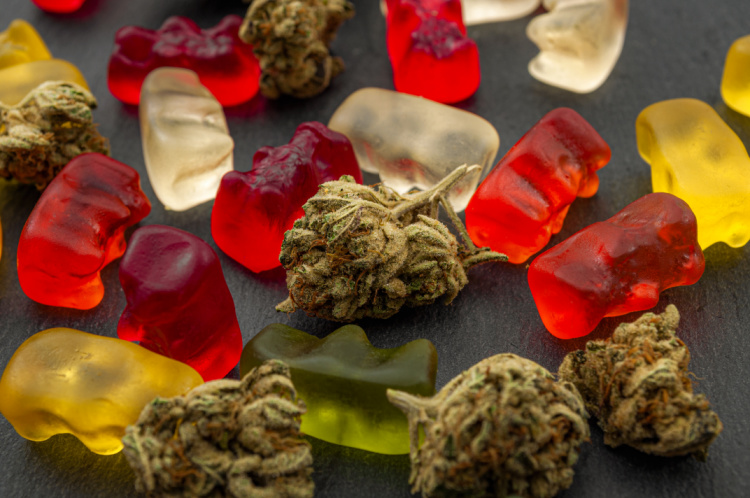
What Are Cannabis Edibles?
Among the most popular items sold at our dispensary, cannabis edibles are food or beverages infused with cannabis or one or more of its naturally occurring cannabinoids. The two most common cannabinoids are THC and CBD.
- THC: The cannabinoid most directly responsible for cannabis’ distinctive “high,” though that’s not all it does. Studies suggest it can help reduce several types of pain, help us manage insomnia, and treat the nausea and appetite loss associated with chemotherapy and other medical treatments. You can also microdose THC, which is consuming just enough of it to get the beneficial medical effects but not so much to feel disoriented or high.
- CBD: The “second cannabinoid”—compared to THC, CBD can impart a gentle cerebral buzz akin to caffeine but won’t cause intoxication. Like THC, CBD is being studied for a wide range of effects, including its potential to help treat certain seizures, reduce anxiety and stress, and contribute to clearer and healthier skin.
Types of Cannabis-Infused Edibles
How many kinds of cannabis-infused edible are there? The answer is only limited by your imagination. While many take the form of familiar (and delicious!) chocolates, cereal treats, and other sweet snacks, others take a more straightforward approach. Here are some of the most common types of edibles you can find on dispensary shelves:
- Chocolates: Rich, luscious, and decadent, cannabis-infused chocolates are a tried-and-true fan favorite—no great mystery why, either. Whether you’re a milk or dark chocolate fan, nuts or no nuts, it’s hard to find someone who doesn’t go for the combo of cannabis chocolate combined in one delicious package.
- Baked Goods: Ever hear of happy brownies? While our selection is always changing, we usually offer a range of baked treats like toasty oat bars, crumbly cookies, and gooey marshmallow crisps to tempt you.
- Fruit Chews and Gummies: Available in a range of tempting fruit flavors, cannabis-infused chews are fun and tangy treats, tailor-made for on-the-go in a portable, discreet package.
- Capsules: A cannabis-infused capsule may not seem the likeliest format in which to take edible cannabis, but they’re an increasingly preferred choice for many consumers. Especially popular for MMJ patients, capsules offer a portable, shelf-stable, and discreet way to access a consistent and precise dose of cannabis.
- Lozenges and Troches: One form of cannabis-infused edible gaining traction is the lozenge or troche (pronounced “trow-kee”). Smaller and more shelf-stable than infused cookies or chocolate bars, they provide a carefully measured dose of cannabis medicine along with a burst of juicy flavor that is absorbed via the mucous membranes in your mouth for a quicker onset than swallowed edibles.
Since the cannabis plant can be processed into so many different forms, from fresh, fragrant flower to concentrates and tinctures, there’s almost no restriction to the number and types of foods and beverages that can be transformed into a cannabis-infused edible.
How Long Do Edibles Take to Start Working?
For all the variety and choices offered by cannabis edibles, it’s important to understand the ways they function in our bodies, especially when compared to the inhaled cannabis you may already be familiar with. The technical term for how long it takes for cannabis or any other medication to take effect is called the “onset time.”
When cannabis is consumed through smoking or vaping, its effects can be felt quickly—typically within about ten minutes at most—due to the cannabinoids being rapidly absorbed through the lungs. However, the cannabinoids in edibles are processed by the liver and digestive system, which means the effects of the cannabis will take longer to express.
How much longer? Anecdotal reports and some scientific research have found that edibles can take between 45 minutes and 2 hours to take effect—but there are variables. We’re all a little bit different when it comes to metabolizing cannabis, so while the onset time usually falls within this range, it can also be longer or shorter, depending on your age, weight, metabolism, and recent food intake.
The most common issue around cannabis-infused edibles is that folks who are new to edibles—believing the product simply “didn’t work”—will take more, then when the double dose of edibles finally kicks in, the effect is much stronger than anticipated. Knowing that it may take up to 2 hours for an edible to take effect, you can be better prepared for a predictable, positive, and fruitful experience.
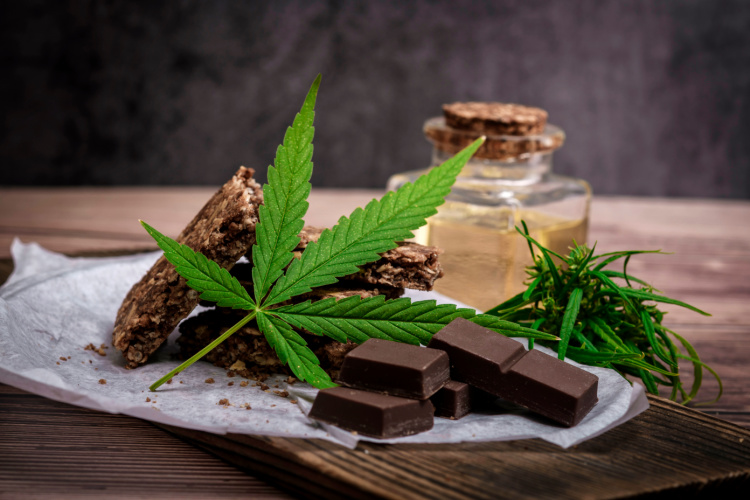
How Long Do Cannabis-Infused Edibles Last?
Just as cannabis-infused edibles take longer to reach their full effect, they also last much longer in our bodies. Whereas you can expect the effects of smoked or vaped cannabis to last from around 1 - 3 hours, the effects of edibles often last from 5 - 8 hours and, in some cases, up to 24 hours after ingestion.
Why do the effects of edibles last so long? The main reason is that when we ingest THC, it’s metabolized into 11-hydroxy-THC. When it changes into this form, many people experience it as more potent than THC consumed by smoking or vaping. In the liver, a process called “first-pass metabolism” also occurs, which releases significantly more 11-hydroxy-THC into the bloodstream. When we smoke or vape cannabis, not much 11-hydroxy-THC ends up making it to our bloodstream, so it won’t feel as strong as the effects from an edible.
To better understand how your body reacts to various dosages, start low and go slow. If you’re concerned about excess psychoactivity, we recommend you try a cannabis edible with a higher CBD ratio or one that contains very little THC.
Do Edibles Stay In Your System Longer?
You may be curious if factors like the first-pass metabolism for cannabis edibles have any implications for drug testing. The current science suggests that the amount of THC consumed affects how long a drug test can detect it, but how it was consumed is less of a factor.
Put another way, factors such as age, weight, body mass index (BMI), and frequency of use are more significant than whether or not the cannabis was inhaled or consumed as an edible. However, these guidelines should provide at least a rough idea of what results to expect from different types of drug tests:
- Urine tests: Can detect cannabis for approximately 1 – 30 days after use
- Saliva tests: Can detect cannabis for up to 72 hours after use
- Hair tests: Can detect cannabis for up to 90 days after use
- Blood tests: Can typically only detect cannabis for up to 12 hours after use, but in some cases, may be detectable for up to 30 days in heavy consumers
Since we’re all different, it’s challenging to give ironclad figures as to drug test detection windows for everybody.
What’s the Right Dosage of Cannabis Edibles?
Every package of cannabis-infused edibles we sell is labeled with the precise dosage of THC in each individual unit, denoted in milligrams (mg). Here’s what you can expect in terms of subjective effects.
- THC Dosage of 1 mg to 2.5 mg: Mild relief of symptoms including pain, stress, and anxiety; heightened focus and creativity. Recommended for first-time consumers or experienced consumers looking to microdose cannabis.
- THC Dosage of 2.5 mg to 15 mg: Stronger symptomatic relief, euphoria, an slightly impaired coordination and perception.
- THC Dosage of 30 mg to 50 mg: Strong euphoria and significantly impaired coordination and perception. These dosages can work well with consumers who have a high tolerance for THC or those whose GI systems don’t absorb cannabinoids effectively.
- THC Dosage of 50 mg to 100 mg: Seriously impaired coordination and perception; possible unpleasant side effects including nausea and increased heart rate. Popular with experienced, high-tolerance THC consumers or MMJ patients living with inflammatory disorders and other serious conditions.
If, at any point, the effects of cannabis feel too strong, don’t panic. Though the sensations—which could include nausea, paranoia, or a racing heart rate—may feel unpleasant, they’re rarely dangerous. That said, if you’re planning to add cannabis to your existing medicinal regime, consult with a cannabis-informed physician before trying infused edibles. Check out our full guide to cannabis edible dosing.
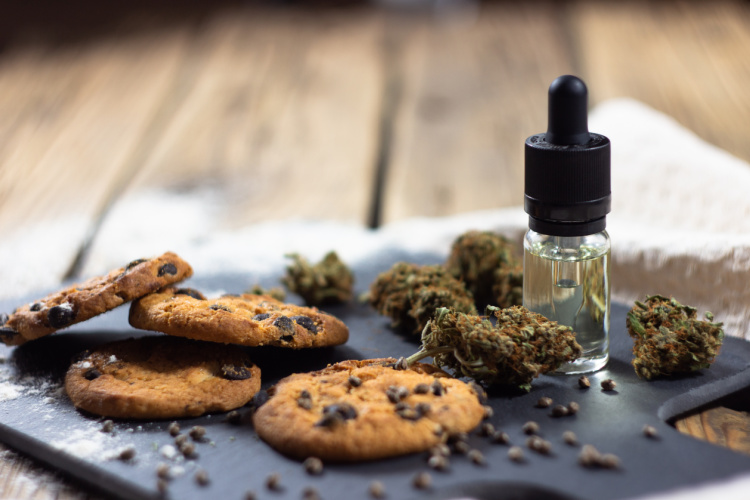
Shop Delicious Edibles at Takoma Wellness
Looking for tasty edibles to incorporate into your routine? We’re here for you. Explore some of the most delicious cannabis edibles in Washington, DC, from the district’s top brands. Shop Takoma Wellness in-store or browse our online menu and place an order for pickup. You can also choose convenient delivery and get everything sent right to your door.
If you have additional questions about how long edibles last or about the new self-certification process in DC, just reach out! We’re happy to help.
Ask a DC Budtender: How to Take Edibles
New cannabis consumers often approach edibles with a mixture of excitement, fear, and caution. We get it: Edibles have a questionable reputation. But they shouldn’t. Our basics will help you have the best experience, every time.
When it comes to cannabis-infused edibles, there’s an element of mystery that can make taking the first bite of that infused chocolate bar (or oat bar, marshmallow crisp, or cookie in a jar) a nerve-wracking experience. How do you know the correct dosage? And what effects will you experience?
Unlike more familiar forms of cannabis, such as flower and vape cartridges, it’s hard to make a visual assessment of the perfect amount (and variety) of cannabis edibles to suit your needs.
That’s why we decided to sit down with our favorite professional Patient Consultants from the best dispensary in Washington DC to learn the ins and outs of cannabis edibles, how to take edibles, and how new consumers can ensure a perfect experience every time.
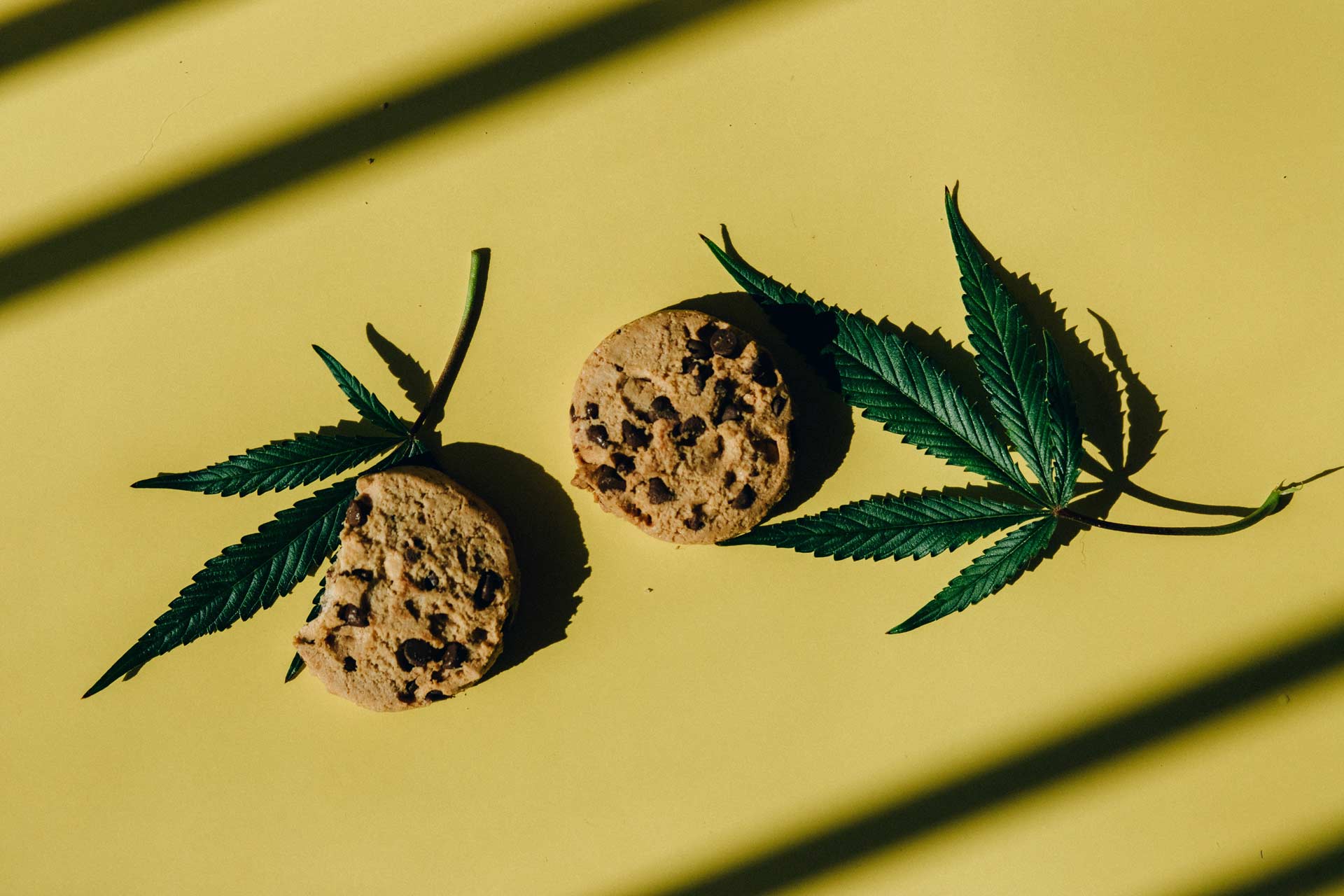
What are cannabis edibles?
Let’s start with the basics. What are cannabis edibles and how do they work?
Put simply, it is any cannabis-infused food product that contains either THC or CBD. Enthusiasts prefer an edible consumption method for many reasons: convenience, circumventing possible impact of smoking on their lungs, delayed effects, and more.
These days, cannabis-infused edibles come in many forms beyond the familiar pot brownie—from beef jerky to breakfast cereal! With the world of cannabis edible brands expanding by the day, it’s easy to find a product to suit your palette (and dosage and effects requirements).
Types of Cannabis Edibles at Dispensaries
Nowadays, you may come across many different types of edibles at dispensaries. Edibles can differ in both their form and their contents, resulting in potential changes to how long their effects can take to kick in and what kinds of effects you may experience when ingesting them.
For example, you may opt to go with a candy or mint that may get absorbed sublingually and kick in faster, or a baked goodie such as a cookie or a brownie that is processed through your stomach, then liver, thus kicking in only after some time has passed (usually, 30 minutes to 2 hours). It’s important to be mindful of the kinds of cannabinoids and cannabinoid ratios that each type of edible contains. This will be detailed on the packaging.
An edible containing solely THC can be expected to produce the typical psychoactive and mind-altering effects that are usually associated with cannabis. The type of THC strain used to make the edible will indicate which types of psychoactive effects are most likely. As a general guide: sativa tends to produce more active, energizing uplifting effects and indica usually will lean more mellow, spacy, and chill. A high-CBD edible will produce some physiological effects, but not psychoactive ones.
Different ratios of these two cannabinoids can result in vastly different edible experiences. Thanks to the entourage effect, consuming THC and CBD together will produce effects that are different than if either one was to be ingested on its own.
Exactly what kinds of effects you can expect from a mixed edible will depend on its exact cannabinoid ratio. A 1:1 THC to CBD ratio indicates a blend of mild euphoria and calm relaxation. The more CBD in the ratio, the less euphoria and psychoactive effects. For example, a 1:10 THC to CBD ratio may mean that there’s no (or very little) noticeable euphoria or ‘high’ whatsoever, making it preferable for therapeutic dosing.
Pay close attention to the label of your edibles to see what their cannabinoid ratio is, and think carefully about what kinds of effects you want to experience from them. Whether you’re looking for a fun and euphoric buzz, or a calm and therapeutic one, you’ll be sure to find it among the many types of edibles at dispensaries. You just need to make sure you choose the right one.
How long does it take cannabis edibles to kick in?
Cannabis-infused edibles tend to take longer to kick in than inhalable cannabis products.
Typically, you can expect to wait between 30-60 minutes to experience the effects of cannabis edibles, though it may take 2-3 hours, depending on your physiology and tolerance. Many such factors can affect the timing of cannabis absorption via edibles. Let’s go over a few:
- You might feel the effects of high dosage THC edibles more quickly than a lower dose product.
- Edibles you consume by sucking on them (such as lozenges, lollipops, and gum) tend to kick in faster since some of the cannabinoids are absorbed directly through your saliva sublingually.
- Chewable edibles (such as gummies, cookies, or oat bars) take longer to kick in since they have to be digested before your body absorbs the THC or CBD they contain.
- Other factors, such as how empty your stomach is and your sex, weight, and cannabis tolerance, can affect how quickly your body reacts to edibles, as well.
If you’ve consumed an edible and don’t yet feel the effects, have patience! Our Budtenders recommend waiting 24 hours before dosing again to avoid consuming too much. Instead, try eating a bit of food to kick-start your digestion.
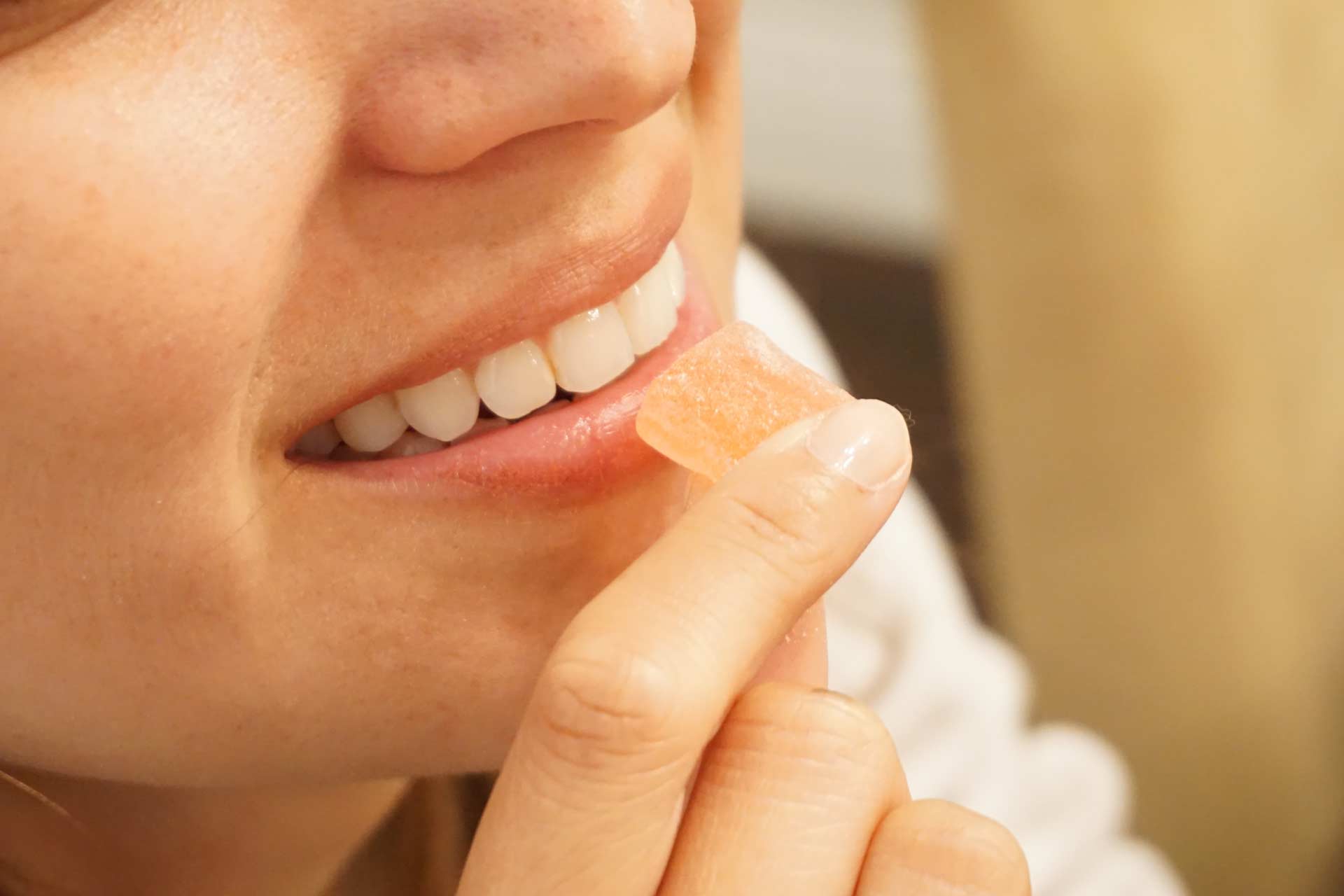
How do edibles make you feel?
One advantage of edibles is the intensity they offer compared to other cannabis products. Cannabis-infused edibles create a more powerful high than some other consumption methods, and you’ll feel the effects longer than inhalable cannabis products. Because an edible is slowly digested by the stomach, an edible high can last for as long as 6–8 hours.
Exactly how an edible will make you feel will largely depend on the strain of cannabis that you’re ingesting. As we mentioned, a strong indica strain often helps you feel relaxed and even sleepy, while a potent sativa will feel much more stimulating and energizing. In general, you should expect a strong body buzz when ingesting cannabis-infused edibles, especially if you’re ingesting an indica strain.
How to Take Edibles: Dosing Your Edible
Getting your dosage right is really important when you’re considering how to take edibles. If you’re planning on trying a THC edible, you should always try to stick to a dosage that you’re sure you can handle.
Ingesting too much THC is a common mistake that people make when enjoying edibles and, while it won’t endanger your health, it can lead to an overly strong buzz that may feel overpowering and may expose you to THC’s side effects like anxiety and paranoia.
That’s why it’s best to start low and go slow with your THC edibles. Try a low dosage that you’re sure you’ll be comfortable with. If you find that’s not enough, go ahead and move up to a larger dosage next time. Just don’t try to ingest more until you’re sure the buzz of your first one has peaked or you may end up taking too much.
How to Take Edibles: Wrapping Up
Looking for the best dispensary in Washington DC for cannabis-infused edibles? Come down to Takoma Wellness today or browse our online menu from home to shop a huge variety of delicious cannabis edibles that you’re sure to love!
Have a question about how to take edibles that we haven’t answered? Don’t be afraid to ask us. We’ll be sure to help you however we can. Taking a mindful approach to cannabis edible consumption will ensure you have a blissful, relaxing experience that’s DC Budtender approved. We look forward to seeing you!
Hash History: A Study of Top Marijuana Strains at Takoma Wellness
There are history buffs in nearly every topic of interest—and one topic that’s been drawing a lot of attention recently is cannabis history. Cannabis buffs look at the study of marijuana strains and their origins in the same way other amateur historians look at airplanes or boats. If you’re one of these people, rejoice! We’re going to take a deep dive on the history of three top marijuana strains in this post.
Let’s Study Marijuana: Top Strains at Takoma Wellness Center and Their Origins
While we were tempted to only look at old-school strains, we decided against it: That would be like only covering ancient history. We’ve put together a survey of classic and more modern genetics for this history lesson. Check out our breakdown of Blue Dream, OG Kush, and Do-Si-Do below.
Blue Dream
We’re going to kick things off with one of the biggest strains of all time: Blue Dream. This sativa-dominant strain was all the rage in the late 2000s and early 2010s. But its story starts before that.
Blue Dream traces its origins to California in 2003. It was created by crossing the legendary cannabis breeder DJ Short’s Blueberry strain with the equally renowned strain Super Silver Haze. While no one’s sure exactly who bred the first Blue Dream plant, some believe it originated in the Santa Cruz area.
Like its parent Blueberry, Blue Dream has a sweet, juicy flavor. One of the things that cannabis lovers found so attractive about Blue Dream was its euphoric and cerebral effects. That makes it a great daytime strain, in contrast to couch-locking indicas. Blue Dream often features a THC content that hovers around 20%, and it has little CBD to speak of.
Check out our menu to experience Blue Dream for yourself.
Classic OG Kush
If someone asked you to think of the biggest strains of all time, chances are OG Kush is one of the names you’d come up with. OG Kush is a hybrid that offers both relaxing and uplifting effects. It usually has a fairly high THC content, regularly clocking in above 20 percent.
And who could forget the flavor and aroma? OG Kush seamlessly blends the spicy incense-like fragrance of Kush plants with the distinctive scent of dirt that typifies OG strains. Sparking it up is often reminiscent of walking through freshly plowed earth.
OG Kush’s real genetics are shrouded in mystery. Despite its seemingly obvious nod to rap, we don’t even know what “OG” really stands for! Some insist it means “Original Gangster.” Still others point to the term “Ocean Grown” in a reference to coastal California. However, experts generally accept that Chemdawg is involved, and crossed with either a Thai or Hindu Kush plant.
Want to learn more? Find Classic OG Kush at our dispensary.
Do-Si-Do
So far, we’ve really only looked at old-school strains in our deep dive into the origins of top marijuana strains. But we’re going to change that and spark up something a little more modern: Do-Si-Do.
If you’re familiar with modern cannabis genetics, you’ve probably heard of Do-Si-Do. It’s a cross between Girl Scout Cookies and Face Off OG. First hitting the scene in 2016, this strain quickly grew in popularity and was named Leafly’s “Strain of the Year” for 2021.
What really makes Do-Si-Do stand out is its high THC concentration. It often reaches a percentage in the high 20% range, sometimes even surpassing 30%. Its flavor hits you in the face, too, and definitely has notes of that classic OG taste we mentioned earlier.
Do-Si-Do is the kind of strain you need to try to believe, and with a strain this high in THC we always recommend the old adage for consumption: start low and go slow. You can browse the Do-Si-Do products we have in stock on our online menu.
The History of Marijuana Strains from Takoma Wellness Center
Hopefully you’ve enjoyed our cursory study of some classic marijuana strains. If you’re looking for other legendary genetics, check out our complete menu!
Questions? Comments? Please reach out, we’re happy to help. We look forward to serving you!
Zurple Punch Weed Strain: A Complete Guide
Are you the kind of cannabis enthusiast who’s always searching for the next hot strain? If you are, look no further than Zurple Punch. Zurple Punch is a cannabis strain that will soon carve a name for itself in the annals of the weed world. With great flavor and pleasant middle-of-the-road effects you’re not going to want to sleep on it.
Marijuana Reviews: Zurple Punch Weed Strain
Zurple Punch is a fairly rare cannabis strain. It’s also fairly new, which may contribute to that—some people just haven’t caught on yet. That gives savvy cannabis lovers the opportunity to get in on the ground floor with this impressive strain. If you’re the kind of person who chases rare genetics, the strain is not to be missed.
Zurple Punch: Genetics and Effects
This strain’s unique name comes from its parents. Zurple Punch is a cross of Zkittles (a hugely popular strain over the last few years) with Purple Punch (an older, but still popular strain). That lineage gives Zurple Punch a fairly balanced hybrid genetic profile.
That genetic profile plays a large role in determining the effects of this strain. Users report that it helps to spark creativity and sociability. It also may heighten the sensitivity of certain senses. Additionally, some fans of the strain say that it helps them relax and chill out.
Zurple Punch often tests between 20% and 23% THC, putting it in the “middle of the road” category of weed strains. It’s not so strong that it’s overwhelming for those new to cannabis, but its effects are powerful enough to please even the most experienced cannabis enthusiast.
THC isn’t the only thing that determines the effects of Zurple Punch, though. It also contains nearly 1% CBD. While that may not sound like much, many strains contain even less CBD. That means Zurple Punch actually has a decent amount of CBD.
Terpene Profile: Flavor and Aroma
It has a unique flavor and fragrance that cannabis connoisseurs won’t find in many other strains. It combines notes of blue cheese and sweet berries with some distinctively nutty tones. Additionally, a faint lavender fragrance permeates this strain.
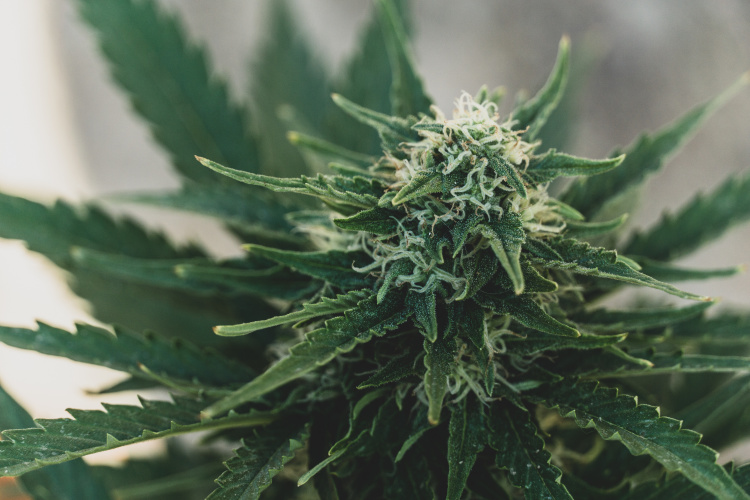
You can thank its terpene profile for that. Terpenoline influences Zurple Punch’s fragrance and tastes the most with its floral funk, along with some help from:
- Caryophyllene: Caryophyllene is the only terpene that’s also a cannabinoid, which puts it in a unique position. It has a sharp, spicy taste, and you can find it commonly in black pepper. According to some research, it may be effective at reducing swelling.
- Pinene: The most common terpene in nature, Pinene, has a fresh and uplifting scent that you may associate with evergreen trees.
- Limonene: Limonene contains the very essence of citrus flavor. You can find this zesty, upbeat terpene n in (you guessed it) citrus plants and their fruits. Some research suggests this terpene may have anti-inflammatory, anti-oxidant, and gastroprotective properties, among others.
Zurple Punch Strain Takeaways
All in all, this is a strain on the precipice of greatness and certainly a strain worth seeking out. Stop by Takoma Wellness Center, call or browse our online menu to see what products we’re currently carrying.
Questions? Comments? Please feel free to reach out: We’re always here to help. And we look forward to serving you!



